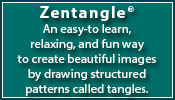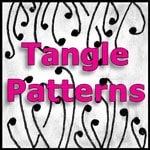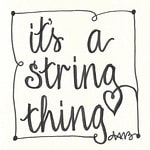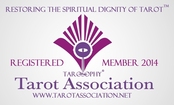|
After SEVEN long years, my Universe Tarot Card rug is finally home. It was delivered this morning in perfect condition. I cannot believe that all of those tiny laminated cards I stitched onto the pathways of this Tree haven't fallen off by now; it must have been unpacked, hung up, taken down, and packed up again a zillion times since it left my hands in 2014. This rug has been more places in the United States and world than I will ever see. 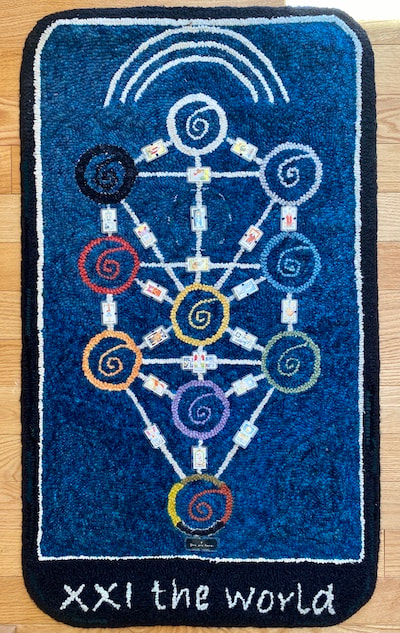 2014. Tarot Card XXI, The World. A rug created for a traveling exhibition of tarot card rugs (Major Arcana only) which toured nationally and internationally for a few years, called "23 Artists Hook the Major Arcana." This rug is traditionally punch-hooked using an Oxford Punch Needle and rug yarn hand-dyed by me. I embroidered the Universal Waite Tiny Tarot cards (after laminating them first, and punching holes through which I could stitch). The cards are placed where they traditionally go on the Tree of Life. "Universal Waite Tiny Tarot Cards," ©1977 U.S. Games, Inc., used by permission. 41.5x24" Twenty-three rugs were designed and hooked for this Project, by a wide variety of well-known AND unknown rug artists. I was flattered to be asked. My rug was the only punched rug in the entire exhibit, as I recall. All the others were traditionally hooked with wool strips, which is the type of hooking I've also tended to do more frequently (but oh how I love rug punching too). To see the history of the exhibit and view the other rugs, go HERE. Most of the rug creators knew next to nothing about tarot. Some who were invited to contribute turned it down because they believe tarot is the work of the devil. I was so sorry to hear that. I simply view tarot--which I've studied for 40+ years--as a way of speaking with our subconscious selves, which cannot use words but can use images. And I do not fortune-tell, since no one can know the future. I see it as a lovely psychological tool and a creative spark. It has been a wise and compassionate assistant in my life for decades. I use it seldom but when I do, it always helps me to express some inner wisdom or insight I might not otherwise have reached. “It’s said that the shuffling of the cards is the earth, and the pattering of the cards is the rain, and the beating of the cards is the wind, and the pointing of the cards is the fire. That’s of the four suits. But the Greater Trumps, it’s said, are the meaning of all process and the measure of the everlasting dance.”
― Charles Williams “When you drop the idea of predicting the future, you start to experience the cards as a mirror of the psyche. That`s when playing with the tarot becomes a path to wisdom.” ― Philippe St Genoux This week's Solstice (yesterday) caused me to start thinking about wheels, as in the Wheel of the Year and how that wheel is turning once again. I've had wheels on the brain. For example, the Wheel in the tarot (see my previous post on the Wheel of Fortune card HERE), plus I just finished a Zentangle® project that had me creating a wheel, below. The above wheel is going to grow up to be a "Spinner Board," once its spinner arm is inserted thru the hole in its center. Before I do that, I'm thinking I will need to laminate and back the piece. There are 55 different tangles on the piece, and I'm guessing it's about 9x9". It was fun to do and took twelve days, tangling for about a half hour each day. It's part of Zentangle's Project Pack 04 and all the relevant how-to videos are on YouTube. In the process of doing this, my already messy desk grew completely out of control, so today I went on a massive cleaning binge. It should be noted that, for me, a "massive cleaning binge" is equivalent to picking up one piece of paper from the floor. I did not get the cleaning gene. I was happily raised in Lower Slobbovia. But today I swept my large desk clean and forced myself to sort through things and create a semblance of order. It's quite shocking. More work has to be done tomorrow but here is the progress so far. (Wish me luck with maintenance...not a strength either) Apparently the wheel turned into a Wheel of Progress for me. At least for the next 24 hours. Happy Solstice to all... Darn the wheel of the world! Why must it continually turn over? Where is the reverse gear? --Jack London I stand and rejoice every time I see a woman ride by on a wheel.
--Susan B. Anthony 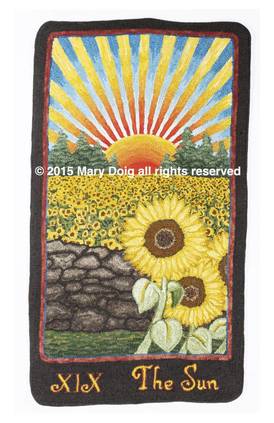 THE SUN CARD, INTERPRETED AND CREATED BY MARY DOIG OF NOVA SCOTIA. © 2015 TO MARY DOIG, ALL RIGHTS RESERVED. PLEASE DO NOT REPOST WITHOUT PERMISSION. THE SUN CARD, INTERPRETED AND CREATED BY MARY DOIG OF NOVA SCOTIA. © 2015 TO MARY DOIG, ALL RIGHTS RESERVED. PLEASE DO NOT REPOST WITHOUT PERMISSION. The exhibit is active and on the move. "Exploring the Tarot: 23 Artists Hook the Major Arcana" has traveled widely and still has far to go. On February 4th, the exhibit is opening from 2-4 pm at the Barron Arts Center in Woodbridge Township, NJ. To see previous posts on these rugs, including photographs and commentary on each, click HERE. This is the twenty-fifth (and FINAL) post in a series on the Tarot Rug Project (also known as "Exploring the Tarot: 23 Artists Hook the Major Arcana"). To view other rugs in the series, go HERE to an index of all the rugs (that post will be kept up to date as new photos are published and the show travels). All of the Major Arcana cards have now been covered, along with the interpretations for each card in a rug by each of 22 artists. If we were to make these "tarot rugs" into a tarot deck, we would need one final design for the back of that deck. This rug is that final design, by Pris Buttler, our 23rd artist. On the left below, you can see her rug from its "DAYTIME" view, and on the right is the same rug turned 180 degrees for the "NIGHTTIME" view. Pris Buttler is an artist in more than one medium. She is first a multi-award-winning graphic and fine artist and has a webpage showcasing her paintings and graphics HERE, including her bio. Please have a look at that site and you will see how she honed her talent in this realm before she took up traditional rug hooking. Here is the rug one final time, "sunny-side up," so that you can see it full-size on the page. Pris says that she was inspired to create this rug with its African theme because she happened upon a tarot deck based on African animals. I'm going to take a guess that she may have been looking at this deck, though I certainly could be wrong. In researching an African-inspired theme for her tarot rug, she eventually came up with a truly original design. Her borders reflect patterns from African fabric (and don't you love the designs on the women's clothing?), and the Sun/Moon in the center are motifs reflected on the back of many traditional tarot decks. Here we see them portrayed in Pris's amazing style. I love the way the animals only show up at night... Pris took up traditional rug hooking in the 1990s and has been teaching for at least 14 years. Her art training immediately made her a standout in this medium, and she has appeared in Celebrations more than once, including serving as a judge on one of the panels that decides who is accepted into that prestigious annual publication. (I cannot imagine a harder job than trying to judge that competition) Lately, her rugs have focused on portrayals of women. A few years back, Pris became well-known for teaching workshops based on the work of Gustav Klimt, the Symbolist artist most famous for his painting "The Kiss," and active in the late 19th and early 20th centuries. In the November/December 2011 issue of Rug Hooking Magazine, there is a wonderful article about one of these workshops (you can see a teaser in the link), and the illustrations are just priceless. In reading the article and looking at the illustrations, one can see that Pris is not encouraging her students to "clone Klimt," but rather simply to be inspired by his overall style. There are ten color photos of student work in the article and you simply cannot believe how wildly different each of the rugs are. Clearly, Pris has the magic touch to encourage her students to new heights of creativity and original designs. If you have the magazine, please re-read this article. Finally, Pris runs the annual Black Bear Rug Hooking Camp in Georgia and it looks like a lot of fun. One thing I didn't mention during this series is just how many of our remarkable rug artists not only teach but also run rug hooking camps, a bonus for all the rest of us who enjoy the camp experience. In concluding this series, I'd like to say thanks for your patience in reading (and ogling), and thanks to all my fellow artists, most especially to Loretta and Michele who conceived of the show. You two are remarkable. If you, the reader, would like to see the show, please look at the FAQ HERE (scroll down that page), posted on 12/7/15, which details where the show will travel. And remember, you can bring the show to a venue near you (instructions in that FAQ). Happy tarot-ing, and happy rug hooking! And now, back to my regular style of blogging...
This is the twenty-fourth post in a series on the Tarot Rug Project (also known as "Exploring the Tarot: 23 Artists Hook the Major Arcana"). To view other rugs in the series, go HERE (that post will be kept up to date as new photos are published and the show travels). THE WORLD: Here is the "classic" Rider-Waite-Smith image: "We are part of this universe; we are in this universe, but perhaps more important than both of those facts, is that the universe is in us." Neil deGrasse Tyson "When we try to pick out anything by itself, we find it hitched to everything else in the universe." John Muir "To the mind that is still, the whole universe surrenders." Lao Tzu This is the last of the Major Arcana, and I am the artist who created the interpretation of the card in the following rug. (This isn't the last rug, though--we still have one more rug to go!) Are you thinking I went off-road with this interpretation? You'd be absolutely right; I did. There is nothing left from the original card in this design. Or is there? In fact, if you look closely, you will see that every single Major Arcana card is represented on this rug, in the form of the Tiny Tarot, published by U.S. Games Systems, Inc., of Stamford CT (USA). I'd like to thank them for allowing me to use their copyrighted images directly on my rug and also for allowing me to copy their Universal Waite Tarot for use in this blog throughout my posts on the tarot project. If you are having trouble seeing what I mean, here's a closer look: This rug is--if I'm right--the only punched rug in the entire project. There are a few traditionally hooked loops in there, but 98% of the rug was punched with yarn and an Oxford punch needle. (Thank you, Amy Oxford and Heidi Whipple of The Oxford Rug Hooking School) What's the design about? It's a diagram of The Universe (another name for The World card) called the Qabala. [There are various spellings of that word: "Kabbalah" and others, but I'm going with the Q-one.] Below is the story of this rug, and I'm sticking to it...it begins with my love for the tarot and ends with my love for both tarot and rug hooking: I began working with the tarot in the 1970s, using it not for fortune-telling but rather as a reflection of the psyche, and I have been learning from its wisdom ever since. Because The World is usually regarded as the final card in the Major Arcana, I wanted to create an image for this rug that would integrate all of the rugs that preceded it—thereby tying the exhibit together. The Tree of Life (also called the Qabala) portrayed on this rug is an esoteric diagram of The World—not just this world, but all the visible and invisible worlds in existence. The esoteric Qabala/Tree of Life is a many-layered framework and has, since the 19th century, been associated with tarot. The twenty-two cards of the Major Arcana have been matched to the twenty-two paths between the spheres on the Tree. In the rug, I have placed the cards on the Tree in their commonly accepted positions, as a way of summarizing and integrating the Arcana for this exhibit. I hand-dyed all of the blue background yarns for the rug, and used bits and pieces of other leftover hand-dyed yarns to duplicate the traditional colors of the spheres on the Tree. As I mentioned above, I used an Oxford Company punch needle for the punching process. A few loops on the rug were also pulled using the traditional rug hooking method. In a post I wrote last year--before I was given permission to publicly speak about this project (it was still in the hush-hush phase), I described the fun I had at Amy's school in a class with Heidi, learning to dye the variegated background for the rug. You can read that post here (it is cryptic because it was pre-publicity for the project, but you'll get the idea). Here are two of the stops I made along the way to creating the rug. In the first, you can see my initial drawing of the outline on monk's cloth (I ended up re-doing the font on the title at the bottom), and then on the right you can see the color-planning in progress. One of the many reasons I love making textile art is that the process is so often entirely meditative. Forming loop after loop is rhythmic and calming—a type of moving meditation. I have had a committed meditation practice for many years and appreciate this opportunity to maintain a mindful state while creating art.
WHAT DOES THE CARD MEAN? This card shows the World Dancer, inside a double circle of protection--the four animals at the outside edges represent the 4 archangels, the 4 elements, and all the other symbology of "four-ness." We have seen these four in another card--card ten, the Wheel of Fortune. Just outside of the Dancer is a green, vital, bursting-with-life wreath, a type of ouroboros, with its red sash in the form of an infinity symbol. She holds two wands, and her legs are in similar position to the Hanged Man, but she is facing up, as he was facing down. The position of her legs also suggests that she is dancing. This is the Fool, come full circle. S/he has completed the journey, and it has been very successful. It's time to stop and dance--to pause awhile and look back, as she seems to be doing, to assess where you have been. Only then can you assess where you are going next, as the journey never ends. Synthesis a good keyword for this card. Another message of this card might be that you have all the resources you need to move forward; just open your eyes to the many options that surround you. When you get this card: As with each of the other cards, if you choose The World card in response to a topic you are pondering, it will have many meanings that all share a similar theme. Ask yourself the following questions if you get this card. One of them will apply to your topic—a little message from your subconscious to your conscious self.
Only one more rug is left in our tarot rug project series, the rug that is the design for the back of the deck we have created together. That's coming up in the next post. Curious about the rest of the rugs in the exhibit? You can see all the posts by clicking on the link at the very top of this post. There is a Frequently Asked Questions (FAQ) section here (NOTE: scroll down to the bottom of that post to get to the FAQ). Thanks for reading. Your comments are always welcome. This is the twenty-third post in a series on the Tarot Rug Project (also known as "Exploring the Tarot: 23 Artists Hook the Major Arcana"). To view other rugs in the series, go HERE (that post will be kept up to date as new photos are published and the show travels). JUDGEMENT: Here is the "classic" Rider-Waite-Smith image: "Spirituality means waking up. Most people, even though they don't know it, are asleep. They're born asleep, they live asleep, they marry in their sleep, they breed children in their sleep, they die in their sleep without ever waking up. They never understand the loveliness and the beauty of this thing that we call human existence." Anthony De Mello "The best way to make your dreams come true is to wake up." Paul Valery "My appointed work is to awaken the divine nature that is within." Peace Pilgrim Let's have a look at what Linda Rae Coughlin has done to interpret this card in her tarot rug: Linda Rae Coughlin is not only a rug artist herself, but also an author (she has at least 2 books on rug art in print), a curator of rug shows, and has traveled internationally to teach on the topic of creativity. Linda Rae has a website packed with wonderful images of rugs by her and also of rugs by others in the numerous shows she has curated. You can find more information about her background and her books on the site--just go HERE to see it, and don't forget to come back! There is so much to take in. Let's look at these two portrayals of "Judgement" side by side: One of the many things I have learned from writing blog posts about this tarot rug show is the concept of simplifying images when transposing a complex idea from a drawing, painting, or photograph into a hooked rug. This rug is almost the last rug in the show (only two more rugs to discuss in this series), and while I could write a book about what I've learned from looking at each artist's work, I promise to spare you--but I will say this: I'll take the idea of simplifying forward with me as I design rugs in the future. As have many other artists in this show, Linda Rae went straight to the most powerful images in the card and simplified, simplified, simplified. As a result, we can really focus on those symbols in her rug. In the original card, we see the archangel Gabriel blowing his horn, from which flows a white banner with a red cross. Beneath the clouds just underneath him lie beautiful mountains, a pond or ocean, and six people responding to his call by standing and looking up at him. And are those coffins? Yes indeed. These folks are literally being resurrected, woken up. But more about that in a moment... In Linda Rae's interpretation of the card, Gabriel and the horn are prominent. The banner has been twinned with itself on the bottom left and right, almost like flowerpots, and from them grow the shoots of new growth and development. The human figures are indicated by the large hands reaching up to cradle the horn against a background of brilliant light--a wonderful response to the call. And somehow that brilliant blue background is a tranquil and lovely "holding container" for what is portrayed here. This design puts the most meaningful symbols from the original card squarely into our view. WHAT DOES THE CARD MEAN? So...what IS being portrayed here? This card is about "answering the call." It is about resurrection, rebirth, forgiveness, and starting anew. The red cross on the white background is a Templar Cross, symbolizing protection for those who answer that call, who wake up and begin a whole new journey. What a wonderful and encouraging message. “I believe there's a calling for all of us. I know that every human being has value and purpose. The real work of our lives is to become aware. And awakened. To answer the call.” Oprah Winfrey “What makes your heart leap?” Jonas Salk When you get this card, ask yourself:
I absolutely cannot resist closing this post with a hilarious clip on YouTube--Ethel Merman singing "Blow, Gabriel, Blow," a Cole Porter song. Ethel is definitely an acquired taste...as one critic said, "She couldn't sing, she couldn't dance, she wasn't pretty..." but she certainly was an American original and great fun to watch. Don't miss what happens about 2 minutes 30 seconds into the clip. Watching this piece will definitely "wake you up," although perhaps that's not QUITE what this card had in mind...!
Curious about the rest of the rugs in the exhibit? You can see all the posts by clicking on the link at the very top of this post. There is a Frequently Asked Questions (FAQ) section here (NOTE: scroll down to the bottom of that post to get to the FAQ). Thanks for reading. Your comments are always welcome. This is the twenty-second post in a series on the Tarot Rug Project (also known as "Exploring the Tarot: 23 Artists Hook the Major Arcana"). To view other rugs in the series, go HERE (that post will be kept up to date as new photos are published and the show travels). THE SUN: Here is the "classic" Rider-Waite-Smith image: (Can you hear the Beatles song in the background as you view this?) "The Sun is new each day." Heraclitus "Just imagine becoming the way you used to be as a very young child, before you understood the meaning of any word, before opinions took over your mind. The real you is loving, joyful, and free. The real you is just like a flower, just like the wind, just like the ocean, just like the sun." Don Miguel Ruiz Let's look at Mary Doig's wonderful interpretation of this tarot card: A sunny day inclines us to smile more. Doesn't this rug incline you to smile? Mary Doig is a long-time rug artist and designer from beautiful Nova Scotia. (Mahone Bay, Nova Scotia, in fact.) Mary and husband were at the show's opening in Shelburne Vermont last December and I had the great pleasure of meeting them. Ironically, I had been to Nova Scotia for the first time just a couple of years ago; Mahone Bay was one of the places I most enjoyed seeing. I wish I had known Mary then! Mary has been hooking for over 20 years and is best friends with the owner of one of the rug hooking shops in Mahone Bay, Encompassing Designs. (In fact, it was Mary who introduced the owner to rug hooking; not only did Christine "take off" with the art, but she created a wonderful business, teaching, and meeting space.) I'm proud to say I've been in that shop, spent quite a bit of time there, and enjoyed it immensely. If you go to Mahone Bay, be sure to stop in. If you go to the shop's link in that last paragraph and you will see a photo of Mary with the patterns she has designed--you can see that she already loved sunflowers, before she ever took on this particular rug project. Mary doesn't have her own website, but she has guest-blogged about two of her other rugs HERE and HERE. If you read those two short blogs, you'll get a sense of her. And if you love her "Homestead" rug as I do (pictured in the first blog), there's a larger picture of that rug here. I was struck by how appropriate it was that Mary did The Sun rug for the show, as she struck me as friendly, comfortable, and as sunny as the card itself. Let's look at the two cards side-by-side: The wall, sunflowers, and sun are all there in Mary's rug; the child and horse are imagined, and the bright red sash has been transformed into one of the borders. I love the way her sunrise has a Japanese styling to it, and radiates, radiates, radiates! And the field of sunflowers she hooked has to be seen to be believed (scroll back up to the larger image to get a better view). It goes on and on, and one can imagine diving into it and running through it for sheer joy. I love the way she did her lettering, which just enhances everything about the rug. This is such a beautiful piece. WHAT DOES THE CARD MEAN? The Don Miguel Ruiz quote at the start of this post says it all. This card is about our true identity, when and where we feel most free to "shine," to be ourselves. Whenever it comes up in readings I've done, clients inevitably smile or sigh with pleasure. We all recognize the life-giving nature of the Sun. Sure, it's possible to get too much of the sun--narcissism might be an example of how that would manifest. But for most of us, it's such a relief to experience warmth, to play, to shine, to be expansive, and to let our true, childlike selves show. This card is all about joy, about coming from the very core of our being, about seizing each moment of happiness as we live it, and about radiating that. When you get this card, ask yourself:
"Turn your face to the sun and the shadows fall behind you." Maori Proverb "Let us dance in the sun, wearing wild flowers in our hair..." Susan Polis Shutz Curious about the rest of the rugs in the exhibit? You can see all the posts by clicking on the link at the very top of this post. There is a Frequently Asked Questions (FAQ) section here (scroll down to the bottom of that post to get to the FAQ).
Thanks for reading. Your comments are always welcome. This is the twenty-first post in a series on the Tarot Rug Project (also known as "Exploring the Tarot: 23 Artists Hook the Major Arcana"). To view other rugs in the series, go HERE (that post will be kept up to date as new photos are published and the show travels). THE MOON: Here is the "classic" Rider-Waite-Smith image: "They dined on mince, and slices of quince, Which they ate with a runcible spoon; And hand in hand, on the edge of the sand, They danced by the light of the moon." Edward Lear Next we will view how CELESTE BESSETTE has interpreted the card on her tarot rug, but before we do that, let's think about the images above and about what this card might signify. Looking at the image on this card, you may find yourself thinking, "What in the world...??!" and indeed, that more or less captures one of the inner meanings of the card. For all the stories, songs, poems, and sayings about the moon, it's hard to see anything clearly under its light--especially when there IS no light (the dark phase) or very little light (waxing or waning). Even under a full moon it can be hard to determine what you are actually seeing, if you are walking outside with that as your only light source. Colors are dimmed or reduced to white, gray, and black. Our experience when using the moon as our only light is radically different from that of using the sun. The moon's light can be confusing, and we may mistake things for what they are in reality. And of course, that also encourages our imagination to run wild--which can be a gift or a curse, depending on the direction it takes. Imagination can be seen in all those stories, songs, poems, and saying have been created ABOUT the moon. It encourages us to develop our imagination and alternative ways of thinking. It has long been a source of wonder and mystery to humans. We may have walked on its surface, but we still know little about it. It is strongly associated with intuition, dreams, and our subconscious selves--the area of ourselves that we cannot directly access. Subconsciousness has no voice, no words, but when and if it wants to communicate, it does so in pictures. (And what is the tarot but a series of pictures? Which is one reason I think it is so effective in helping us to communicate with our own subconsciousness.) In the Rider Waite Smith image above, we have the pool (subconsciousness) at the bottom of the card with a crayfish emerging (sometimes things emerging from the subconscious can look very strange and we don't know what they mean at first). We have the wolf (the wild self) and the dog (the tame self) under the influence of the moon. A path leads past twin towers and into the distant mountains. The moon herself is pictured in three phases. Although the moon acts as a mirror for the light of the sun, it has a dramatic and visible pull on our oceanic tides. Water has long been a symbol for our emotional life. Since our bodies are up to 60% water, I'll let your draw the inference of how much influence the moon has over each of us. And that's another key word for one of the meanings of this card: Influence. Now let's take a look at what Celeste Bessette has done with all of this in her tarot rug. Here it is: Celeste Bessette is a talented, well-known, certified rug hooking teacher. She has appeared in Celebrations at least once (the highly-respected annual magazine that showcases rigorously judged, high-quality rug art). Celeste doesn't have a webpage and I haven't yet had the pleasure of meeting her (which I hope to remedy soon) but I see on her LinkedIn page that she has been a textile artist for over 20 years and I can see many references to her work online, especially emphasizing her current passion for and teaching classes on hooking stained glass rugs. Clearly, her interpretation of The Moon card is built on her stained glass explorations. Isn't it gorgeous--I especially love how the colors and hooking in the moon completely mirror the colors and hooking in the pond beneath it. The wolf and the dog, the crayfish, the path, the mountains, the twin towers, and the sky are all deliciously watery/lunar/dreamlike. I love the use of color here and the directional hooking. It is all enticingly mysterious and a wonderfully accurate interpretation of the original card. Can't you just picture this as a stained glass window in a gothic structure, with moonlight pouring through it? WHAT DOES THE CARD MEAN? Mystery. Illusion. Imagination. Possibly deceit or misinterpretation. Possibly confusion or inability to see clearly. This card also reminds us that the moon has phases--predictable cycles; things wax and wane, and if we can determine what phase we are in now, then we can make an intelligent guess as to what phase is coming next. We also know that if we wait, things will change. The moon is "perfectly stable in its instability." We know it has a regular cycle, just as women have their regular menstrual cycles on earth. And we know that it can INFLUENCE us, because that is its job. Remember its influence on the sea-tides, and the fact that we are up to 60% water? Joanna Powell Colbert says: "The moon is constantly changing, and is utterly faithful in her changes." When you get this card, ask yourself:
“Do not swear by the moon, for she changes constantly...” ― William Shakespeare “The moon will guide you through the night with her brightness, but she will always dwell in the darkness, in order to be seen.” ― Shannon L. Alder "Let the waters settle and you will see the moon and the stars mirrored in your own being." -- Rumi Curious about the rest of the rugs in the exhibit? You can see all the posts by clicking on the link at the very top of this post. There is a Frequently Asked Questions (FAQ) section here (scroll down to the bottom of that post to get to the FAQ).
Thanks for reading. Your comments are always welcome. This is the twentieth post in a series on the Tarot Rug Project (also known as "Exploring the Tarot: 23 Artists Hook the Major Arcana"). To view other rugs in the series, go HERE (that post will be kept up to date as new photos are published and the show travels). THE STAR: Here is the "classic" Rider-Waite-Smith image: "All shall be well, and all shall be well, and all manner of thing shall be well." Julian of Norwich There is something about this card, especially since it comes directly after The Tower card, that makes us want to let out a big sigh, and relax. All of its symbols are inherently peaceful, and that is one of its themes. The card is packed with symbols--we'll focus on just a few. The lovely naked woman has nothing to fear and is perfectly calm. She is pouring water both into the pool and also on the earth; water is plentiful in the card. She has an inexhaustible source of it. It circles, centers, flows. In tarot, one of the things that water represents is intuition. It also represents our emotions. Both intuition and emotion are in good supply, in a balanced and centered way. The earth on which she is pouring the water is fertile and flowering as a result. Behind her is an ibis (a bird associated with the Egyptian god Thoth) on a tree, representing wisdom, and above her are seven small stars, reminding us of the Pleiades (also known as the Seven Sisters) and one large, 8-pointed star, a symbol of the Sumerian goddess Inanna. Armed with this partial list of symbols and a start on their common meanings, let's look at what Cyndy Duade has done with her interpretation of this card: Ok, go ahead--say it. Wow. Cyndy Duade is another in our long line of distinguished and well-known rug artists who contributed to this show. She is a certified rug hooking teacher, a colorist and dyer, and holds many classes in the Northeastern USA and elsewhere. She doesn't have a website, but there is a charming and thorough introduction to her HERE. Well worth reading. I look forward to meeting her some day. This rug is clearly a reflection of her many travels. One of the most intriguing aspects of the rug is that she has used an endanged bird native to Hawai'i as a substitute for the ibis; it is named the 'I'iwi. (That's not a typo--it's really spelled that way, and you can find out more about it HERE. ) It's gorgeous and she's captured it perfectly in the rug. There is a definite story behind this interpretation with its Polynesian theme. Every single one of the objects and symbols in her rug has personal meaning to her. Some of that story is revealed by Cyndy in the show's catalog. (To get the information on how to order the catalog--the proceeds from which help the rug to travel--see the FAQ at the very bottom of this post.) Even the design in the white border was carefully selected by her to reflect and honor the culture she portrays in the card. The gourds from which the water is being poured, the flora and fauna portrayed...all reflect that lovely culture. If anything, I think Cyndy's rug makes me feel even more like giving a relaxed sigh as I look at all the elements she has combined, than the original card does! And I love the reversals--there's just a little bit of clothing on the woman; she is facing in the opposite direction from the card, the tree and bird are on the other side also. In this way, the rug mirrors the card perfectly; and there are so many similarities and echoes of the original. But all is done with a Polynesian twist, with this lovely and grace-filled result. “Silently, one by one, in the infinite meadows of heaven, Blossomed the lovely stars, the forget-me-nots of the angels.” ― Henry Wadsworth Longfellow “The cosmos is within us. We are made of star-stuff. We are a way for the universe to know itself.” ― Carl Sagan “Caddy got the box and set it on the floor and opened it. It was full of stars. When I was still, they were still. When I moved, they glinted and sparkled. I hushed.” ― William Faulkner “Each star is a mirror reflecting the truth inside you.” ― Aberjhani SO WHAT DOES THE CARD MEAN? The Star is the ultimate card of hope and healing. The main figure is calm, collected, and has all that she needs to fertilize or bless the earth around her. She has an inexhaustible source of what she needs - the waters of hope. Notice that she draws not on her own personal power to bless the earth, which could eventually drain her energy; instead she uses the waters of the pool, a deep, round mandala of compassion and healing. And while she pours water onto the earth around her, so she also returns water to the pool to ensure that it will never run dry. This card tells us that even in darkness (stars, after all, are visible only at night, dawn, and dusk), we can look up and see those lovely lights hanging above us, encouraging our spirits. The Star is like our compass, guiding us in hope towards our next step to healing...guiding us toward beauty and balance. It is a card of nourishment and replenishing. I also think this card has a lot to tell us about the importance of Nature in healing our spirits, and how we must not only draw hope and energy from Nature, but also give back to Her. In that way, it is a about stewardship and kindness. When you get this card, ask yourself:
As always, thanks for reading and I hope you are enjoying the show. Frequently asked questions are below, including information on the catalog. FREQUENTLY ASKED QUESTIONS ABOUT THE SHOW:
HOW DO I GET A CATALOG?
IF I WANT TO BRING THE SHOW TO MY TOWN, WHAT SHOULD I DO?
WHERE WILL THE SHOW GO NEXT?
This is the nineteenth post in a series on the Tarot Rug Project (also known as "Exploring the Tarot: 23 Artists Hook the Major Arcana"). To view each post on all the rugs in the series, go HERE (that post will be kept up to date as new photos are published and the show travels). THE TOWER: Here is the "classic" Rider-Waite-Smith image: For many people, this is one scary-looking card. For people who aren't familiar with tarot, the three most unsettling cards in the deck are Death, The Devil, and The Tower. Having already discussed the first two, I hope I have been encouraging all of us to think more deeply about this trio without making assumptions about their "obvious," most extreme meanings (which rarely apply). For any of them to actually mean what they may first suggest, you would need to have a context of certain specific other cards around them--and that's actually quite rare. It's far more likely that these cards refer to our ATTITUDES rather than to any dire events, and that is just as true for this card as it is for the other two we've already covered. Let's look at a quote by Dawna Markova which captures part of this card's meaning. As you read it, bear in mind the image above. "I will not die an unlived life. "I will not live in fear of falling or catching fire. "I choose to inhabit my days, to allow my living to open me, to make me less afraid, more accessible, to loosen my heart until it becomes a wing, a torch, a promise. "I choose to risk my significance; to live so that which came to me as seed goes to the next as blossom and that which came to me as blossom, goes on as fruit," Dawna Markova What comes to mind when we think about the symbol of a tower? Some examples include: The Tower of Babel. An "Ivory Tower" (an institution of higher learning). A castle tower. The towers of skyscrapers (like the former Twin Towers of New York, or the Trump Tower). The Eiffel Tower. Cell phone towers. Church towers. What do all these have in common? They are all related to long-established, often-codified ideas and organizations: religion, education, business/enterprise, communication. Towers are built to represent and serve the ideas, purposes, defenses, and ambitions of the organizations to which they are dedicated. Because of their tremendous height, towers are particularly strongly built and strongly buttressed. And so is the thinking or belief system found within some of the organizations mentioned above. Our own thoughts can be very "strongly built" (and become rigid) and heavily defended. Thus, The Tower symbol can represent our limited or rigid thinking, or our absolute belief or trust in some structure we have built up within our own lives. Just as the interior of a tower is narrow; so may our own thinking may have grown narrow. "Towering ambition" is another phrase that comes to mind here. Lightning, one of nature's most destructive but illuminating forces, is attracted to tall structures like towers. In the classic image of this card, lightning has knocked the top off of the tower, and two people are falling from it. This Tower represents some kind of built-up thought/structure that is not true or correct--lighting (illumination) has come along and destroyed the very top, tossing out its residents and burning out all falsehood or error from the inside. There are many other rich layers of meaning in each symbol in the classic card, and we cannot delve into all of them here. We have enough to get us started, though, so... Here is Michelle Micarelli's interpretation in her tarot rug. Michelle Micarelli is one of the co-creators and organizers of this entire exhibit, along with Loretta Scena. Michele is an internationally renowned textile artist, master colorist, and longtime teacher. She also works in other media. It's her mission in life to excite creativity in all her students. To watch Michele in the dye kitchen is to watch the master at work. She can take any piece of multi-colored wool and produce a flawless "twin" in minutes with no recipe, simply working by eye. I remember reading somewhere that Michele learned about rug hooking from her father--rather unusual--who took it up when he was recovering from surgery. View her complete profile on her website HERE; be sure to ogle all the rugs and other creations in the gallery on the site. If you compare her interpretation with the original card, you will see that the detail Michele has achieved on her tarot rug is truly impressive. On her website, she mentions that she often works in 4 & 5 cuts to achieve this level of detail. She has altered her Tower enough so that it appears to resemble a conch shell, set on fire by the same lightning we see in the original card. The roaring fire within the Tower/shell is scouring out any incorrect beliefs or false ambitions. The falling human figures are not there--but isn't there a suggestion of people hanging out the windows? And look at that roiling sky, echoed below by the roiling sea! The movement, colors, and design of this piece make it especially compelling and attractive. The combination keeps your eye moving around the rug, noticing new things every time it lands. I remember Michele saying in a video interview that the ocean is very close to her heart and that she is very concerned about environmental damage to it. You can see her love of the ocean in this rug (and you will see that theme in many of her other rugs as well). SO WHAT DOES THE CARD MEAN? In the Wheel of Fortune card (Card Ten), we looked at change/transformation that occurs in cyclical fashion, moving up, then down, as the Wheel turns. In The Tower card, we now look at change/transformation that is dramatic, sudden, and shocking. Think of the times in your own life when you have realized in a blinding flash (the lightning strike) that something you wholeheartedly believed was not true. Or when a structure in which you've placed your faith has collapsed without warning. Our first reaction to events like these is to be totally stunned, then perhaps horrified (or, depending on circumstances, delighted). A quote from Frederick Barthelme illustrates another common reaction: "There is a feeling of disbelief that comes over you, that takes over, and you kind of go through the motions. You do what you're supposed to do, but in fact you're not there at all.” This is a frequent response to shock. Eventually, reality sets in and we need to deal with the new normal. We may feel liberated, or we may feel like you've lost everything. The truth is that we are now seeing something clearly--as it is--and we now need to adjust to it--as it is--perhaps for the first time. When this card comes up for you, ask yourself:
"It is in the midst of disasters that bold men grow bolder." Henry IV “There is only one kind of shock worse than the totally unexpected: the expected for which one has refused to prepare.” ― Mary Renault "Those who are easily shocked should be shocked more often." Mae West Remember that you can catch up on all the other rugs in the exhibit at the link at the very top of this post. If you are curious about what's behind the exhibit, there is a Frequently Asked Questions (FAQ) section here (scroll down to the bottom of that post to get to the FAQ).
Thanks for reading. Your comments are always welcome. This is the eighteenth post in a series on the Tarot Rug Project (also known as "Exploring the Tarot: 23 Artists Hook the Major Arcana"). To view the entire series, go HERE (that post will be kept up to date as new photos are published and the show travels). THE DEVIL: Here is the "classic" Rider-Waite-Smith image: "I can resist everything except temptation." Oscar Wilde "Lead us not into temptation. Just tell us where it is; we'll find it." Sam Levenson "The Devil made me do it." Flip Wilson This is yet another card in the classic deck that some people find very disturbing. So, everyone: take a deep breath and remind yourself that you are talking about a piece of painted cardboard--that's all! Yes, it's full of symbols, but we'll get into them in a few moments--it's really not a harbinger of doom. Read on. Let's first have a look at Emily Robertson's interpretation of this classic card. Emily Robertson is an award winning rug artist and teacher, currently known for her feminist and "sayings" rugs. A great introduction to Emmy can be found in a delightful video HERE, in which you can see dozens of her rugs. She is unbelievably prolific! I had the good fortune of being able to hook with Emmy for a few years while she lived close by, and share in her zany humor. She is a wonderful friend and a truly kind person. She is also an ordained minister, so it's especially wonderful that she did an interpretation of The Devil as her tarot rug. In the original image (the tarot card), there are symbols galore, such as the ridiculous looking half-man/satyr, half beast, the chained man and woman, and more. But look closely at those chains, folks. Very closely. If either the woman or man chose to think rationally for a moment, they would realize that all they have to do to be free is to lift those exceptionally loose, floppy chains over their heads and just walk away. So why don't they? Not to mention that the Devil isn't exactly well-balanced on his tiny, precarious perch; either one of our chained people could knock him off that perch with one small push of an index finger. So why don't they? What is really going on here? Plus, the woman has a "tail" with a bunch of grapes (food or wine), and the man's tail is a flame (passion). Sound familiar? This is a card about temptation, addiction, and oblivion. And often it's also about blaming our problems on external factors. (See "The Devil made me do it!" quote above) All of us have moments just like this in our lives, moments of complete mindless behavior (oblivious to what is really going on) in which we may feel hopeless, stuck, enslaved to something or some one. "I just can't leave this bad relationship." "I can't believe I just ate that whole thing." "I just can't help myself." Really? I do not mean to make light of this, as some of these temptations truly do take us over and appear supernaturally strong. I certainly experience that, and frequently! But in just about every case, there is something about the situation that we are either unable to see clearly or unwilling to see clearly. We just do not take those chains off our own necks. “The mind is its own place, and in itself can make a heaven of hell, a hell of heaven..” John Milton In Emmy Robertson's interpretation, she has pared down the images. The Devil himself is only suggested via the tail-like arrows and the pentagram. In essence, he doesn't even need to be present, because we'll do his work ourselves, by unquestioningly accepting our own negative thoughts and by "sleepwalking" through our days, oblivious. What is going on in this rug? Just as the Devil card is disorienting, so is the rug. Is she walking away from the man? Or is she leading him and he's following? Is he pushing her? Is he reaching out to her with a supportive touch? We can't tell. And what about the chains? In the rug, the chains are actually a mixed-media touch: actual pink plastic chains that Emmy has attached to the hooking. The woman appears to have broken one of the chains. And look at how loose the chain is around her neck--she could lift that right off and walk away. Is that a door to her right? Are they freeing themselves, or sleepwalking into some type of addiction? We simply can't tell, and I love the ambiguity of this rug. WHAT DOES THE CARD MEAN: As I mentioned above, this card often turns up when you feel hopelessly stuck or enslaved by some situation, interior or exterior (although very likely you will be tempted to blame someone or something exterior to yourself). So... When you get this card, ask yourself:
In general, the only thing to fear with this card is the kind of fear that occurs to us when we are afraid to look at a situation objectively and without blame, and deal with it for what it is. Remember that you can catch up on all the other rugs in the exhibit at the link at the very top of this post. If you are curious about what's behind the exhibit, there is a Frequently Asked Questions (FAQ) section here (scroll down to the bottom of that post to get to the FAQ).
Thanks for reading. Your comments are always welcome. Today's suggested resource is a rug hooking resource (not tarot): The Green Mountain Rug Hooking Guild). Enjoy the hooked rug artistry at that site. This is the seventeenth post in a series on the Tarot Rug Project (also known as "Exploring the Tarot: 23 Artists Hook the Major Arcana"). To view the entire series, go HERE (that post will be kept up to date as new photos are published and the show travels). TEMPERANCE: Here is the "classic" Rider-Waite-Smith image below: "Joy, temperance, and repose, slam the door on the doctor's nose." Henry Wadsworth Longfellow “Use what seems like poison as medicine. Use your personal suffering as the path to compassion for all beings.” Pema Chödrön "A fretful temper will divide the closest knot that may be tied, by ceaseless sharp corrosion; a temper passionate and fierce may suddenly your joys disperse at one immense explosion." William Cowper Let's have a look at Jule Marie Smith's interpretation of the Temperance card on her rug: Jule Marie Smith is an enormously talented, highly respected rug artist who--as with just about all the artists in this project--has won numerous awards for her originality and mastery of color. I think she is too busy teaching, dyeing wool, and creating rugs to have a webpage. The easiest place to see several of her rugs is HERE--to see them, scroll down to the bottom of that page. (The page is a description of a class she's giving in 2016.) I've been lucky enough to take two classes with Jule Marie and loved every minute of both. I hope to study with her again. Rug hooking seems to attract very special and kind people, and Jule Marie fits right into that category. To see one of her rugs up close is to see how she paints with wool, using colors in both bold and subtle combinations. She has long been known for her penchant for creating original colorful borders around her rugs. Jule has worked with The Egyptian Tarot rather than with the Rider-Waite-Smith deck, and her rug reflects that. I love the design, from her red-rayed sky and powerful sun, to the lotus border and the angelic figure in Egyptian garb pouring from one flask to another (complete with "walk like an Egyptian" stance). And those wings! Check out the coloring in the wings. I also like the bargello-like water underneath, its pedestal and lotus vase, and the Serpent of Wisdom sneaking in an appearance. Going back for a moment to the original Rider-Waite Smith image at the top of this post, you can see the complex and numerous symbols in the card itself. In both the card and in Jule's rug, we have an angelic figure mixing a liquid between two cups. So... WHAT DOES THE CARD MEAN? One of the many traditional meanings of the card is that of bringing two unlikely things together and successfully integrating them. To do this, one must achieve the correct balance--first within oneself, and then with any external ingredients. And if you look at the angel's feet in the card, one foot is on land (the material world) and one in the water (subconsciousness). This angel is all about balance, moderation, and careful experimentation until s/he hits just the right combination of ingredients in the two substances to create the perfect blend. When you get this card, ask yourself:
A few more quotes may help you, especially the last one from Rumi: "Temperance: Eat and carouse with Bacchus, or munch dry bread with Jesus, but don't sit down without one of the gods." D.H. Lawrence "The ingredients of health and long life, are great temperance, open air, easy labor, and little care." Sir Philip Sidney “Your hand opens and closes, opens and closes. If it were always a fist or always stretched open, you would be paralyzed. Your deepest presence is in every small contracting and expanding, the two as beautifully balanced and coordinated as birds' wings.” Rumi Remember that you can catch up on all the other rugs in the exhibit at the link at the very top of this post. If you are curious about what's behind the exhibit, there is a Frequently Asked Questions (FAQ) section here (scroll down to the bottom of that post to get to the FAQ).
Thanks for reading. Your comments are always welcome. Today's suggested tarot resource: The Tarot Association of the British Isles (TABI). You don't have to be British to appreciate and use what they have to offer. This is the sixteenth post in a series on the Tarot Rug Project (also known as "Exploring the Tarot: 23 Artists Hook the Major Arcana"). To view the entire series, go HERE (that post will be kept up to date as new photos are published and the show travels). NOTE: This is likely to be a lengthy post, as this card is one of the most misunderstood cards in tarot. If you just want to see the image of the tarot card rug, scroll down to it past all the verbiage below. DEATH: Here is the "classic" Rider-Waite-Smith image below: OMG, AM I GOING TO DIE??? Before we get to the tarot rug interpretation of the card, let's first clear up some misunderstandings about the card itself. This is one of the most anxiety-producing cards in the deck. And usually for the wrong reason! It does mean death, but not in the way you may think. In my experience, it has very rarely meant physical death unless it shows up in combination with one or both of two other cards in the deck (which I will not be naming here), even if you are asking a question about a health issue. For example: In 2010 I was diagnosed with a life-threatening, aggressive, and serious illness. It was tense. I did a reading for myself (yes, I read for myself as well as for others) and the Death card came up. Now, for years I've been studying tarot and reading for clients and I have seen the look on their faces when this card presents itself. And I've done my best to truthfully reassure them that it's saying something other than, "Prepare to meet your doom." But there I was--looking at the card in my own reading about my own health, and in a life-or-death situation. Could I take my own advice? In fact, I did. Was it easy? No! Especially when the Death card showed up in EVERY reading I did for myself for the next 8 or 9 months. It got to be a joke. I did a reading for myself about once a week...and there was Death staring me in the face. I'll shorten the rest of the story by saying that after the early diagnosis, further tests proved things were even more serious...so I chose to have every aggressive treatment Western medicine could provide. It wasn't a fun year. But here I am, six years later, in good health. Am I going to die? Sure. Possibly even from that very illness diagnosed in 2010; although I seem to be "cured," it could just be hiding. But the fact is, we're all going to die, and despite the fact that the Death card turned up in every reading, I knew it was about the death of my former relationship to the way I thought about my body. It was the death of the illusion of immortality, but it wasn't telling me I was about to die. Not right then. Did I believe that the entire time? No--I had moments of pure terror. But I did believe it most of the time...all the other cards were suggesting that I would be fine. It's always important to look at the card in the context of all the other cards you are getting (I do not think 1-card readings are generally useful). Do NOT make the mistake of jumping to conclusions about this card. It commonly shows up when something in our internal lives--some internal process--is ending. It's about ending a relationship...but let's bear in mind that this can include but goes well beyond a person-person relationship. It can be ending a relationship with school (graduation), or ending a relationship with a community (moving), or ending a relationship with a particular interest or hobby. Or it can be the ending of a relationship with a company or department within that company (changing jobs). Or an ending of a particular belief system ("I'm immortal!"). The type of ending this card signifies might better be termed a transition--something that normally happens gradually, organically. It's often about step-by-step change of a profound nature. Most people do not resist change. What we resist is transition. Change is a situational shift. Transition, on the other hand, is the process of letting go of the way things used to be and then taking hold of the way they subsequently become. In between the letting go and the taking hold again, there is a chaotic but potentially creative “neutral zone” when things aren’t the old way, but aren’t really a new way yet either. --William Bridges There is another card, coming up soon, which is also about change, but sudden, shocking change that is external. We'll be discussing that when we get to card #16. Here is Doug Rankin's interpretation of the Death card in his tarot rug: Let's have a quick look at these two complex images side by side: Doug Rankin is an internationally known teacher and artist, based in Canada and teaching at his business, Highland Heart Hookery, and at many other venues. While he doesn't have a personal website, I did find these photos of Doug with some of his rugs and with the work of many of his students HERE, in the "Shaded Flowers" and in the "Maud Lewis" workshops he offered at the Museum. In the catalog for the tarot rug show, Doug explicitly states that he searches out artistic challenges, and that he took this card on for that reason. And in looking at the original image, you can see why. The classic image is packed with symbols--the pale horse, the white rose, the four figures around the horse (king, child, bishop, maiden), the two towers, the rising or setting sun, and of course, Death itself in full armor. Doug's interpretation has turned the image so that horse and rider are coming straight at you. And is that Charon's boat coming across the River Styx? You can see so many of the other symbols have been skillfully worked into the design. I like this in-your-face presentation of the symbols, as the endings and transitions signaled by this card truly feel challenging and "in-your-face" when we come up against them. Endings are often obvious; it's the beginning of new things--promised by this card--that are more of a mystery at first. Let's look at some quotes that may illuminate the card: "Life is one big transition." Willie Stargell “How strange that the nature of life is change, yet the nature of human beings is to resist change. And how ironic that the difficult times we fear might ruin us are the very ones that can break us open and help us blossom into who we were meant to be.” ― Elizabeth Lesser “To say goodbye is to die a little.” ~ Raymond Chandler "...Every beginning ends something." Paul Valery "There is a time for departure, even when there’s no certain place to go." Tennessee Williams WHAT DOES THE CARD MEAN? I think that's been covered! It doesn't mean you are going to die. It's a reference to the fact that something in your life is passing away: a relationship with something...or some one. When you get this card, ask yourself:
One final point about this card: As I said early on in this series, I don't believe that tarot is well-suited to prediction. Others may feel differently, but I believe if someone is "predicting the future" with tarot cards they are either genuinely psychic--which is a different process from using tarot--or they are misusing the cards. The future is never fixed. Never base any important life decisions on your interpretation of one card, or even an entire reading. These are, after all, just pieces of painted cardboard. If you want a medical (or legal or relationship) opinion, go to a medical professional (or attorney or therapist). Then be sure to get a second opinion and confirm with multiple sources if it's a critical decision. Remember that you can catch up on all the other rugs in the exhibit at the link at the very top of this post. If you are curious about what's behind the exhibit, there is a Frequently Asked Questions (FAQ) section here (scroll down to the bottom of that post to get to the FAQ).
Thanks for reading. Your comments are always welcome. This is the fifteenth post in a series on the Tarot Rug Project (also known as "Exploring the Tarot: 23 Artists Hook the Major Arcana"). To view the entire series, go HERE (that post will be kept up to date as the photos are published and the show travels). THE HANGED MAN: Here is the "classic" Rider-Waite-Smith image below: “To change ourselves effectively, we first had to change our perceptions.” Steven Covey "I like to turn things upside down, to watch pictures and situations from another perspective." Ursus Wehrli "Take a walk with a turtle. And behold the world in pause." Bruce Feiler "When things don't happen right away, just remember it takes six months to build a Rolls-Royce and thirteen hours to build a Toyota." Chad Hymas The quotes above show two of the common interpretations of this card. Now let's have a look at what Kathleen Herbert did with this card in her tarot rug: Kathleen Herbert is a longtime textile artist, certified teacher, and collector of and speaker on the history of antique hooked rugs. I met Kathleen years ago in Connecticut and it was great to reconnect with her through this show. What I did not know about Kathleen until I saw the rug is that she also has another hobby--collecting gravestone rubbings and epitaphs, or "Mourning Art." I love her whimsical take on The Hanged Man. Many people, when they first see the classic image on the card, feel quite nervous about it; they don't notice that the Hanged Man looks untroubled by his predicament. He is hanging by one foot, after all. The other foot is free. There is no indication that his hands are tied. With a bit of effort he can likely return himself to an upright position. Does he wish to? Is he deliberately suspending himself upside down to gain another perspective, as with an inverted yoga pose? Or has he come to a place in life where he is, literally, in suspension--even stuck--and is being forced to wait something out? In Kathleen's rug we see a cheery looking and acrobatic Hanged Man, with that halo or sun-like hair about his head. I like her brilliant sun and shooting stars, and the trees with their "mourning art" branches and leaves. Is that a raven we see, and is there a hint of Edgar Allen Poe in this rug? Kathleen has added her own traditional headstones, complete with epitaphs, and the whimsical multi-colored skills and fire. Her rug makes me smile. WHAT DOES THE CARD MEAN? When you get this card, ask yourself:
Remember that you can catch up on all the other rugs in the exhibit at the link at the very top of this post. If you are curious about what's behind the exhibit, there is a Frequently Asked Questions (FAQ) section here (scroll down to the bottom of that post to get to the FAQ).
Thanks for reading. Your comments are always welcome. Today's suggested tarot resource: Secrets of the Waite-Smith Tarot, by Marcus Katz and Tali Goodwin. This is the fourteenth post in a series on the Tarot Rug Project (also known as "Exploring the Tarot: 23 Artists Hook the Major Arcana"). To view the entire series, go HERE (that post will be kept up to date as the photos are published and the show travels). JUSTICE: Here is the "classic" Rider-Waite-Smith image below: “Right is right, even if everyone is against it, and wrong is wrong, even if everyone is for it.” ― William Penn Let's have a look at Lisa Chaloner's interpretation of the classic image: "It is not what a lawyer tells me I may do; but what humanity, reason, and justice tell me I ought to do." Edmund Burke "An inconvenient truth..." (Movie title and idiom which captures some of the meaning of this card.) While I haven't (yet) had the pleasure of meeting Lisa Chaloner, I did find the following statement from her on her Etsy site:
"Traditional Rug Hooking is my obsession. I picked up a hook in 1991 and haven't put it down since. In 2009, I completed the Pearl McGown certification process for traditional rug hooking. I teach rug hooking classes for 8 months of the year. I love to let the color in my rugs express the silent part of personality, so I began dyeing my own fabric 10 years ago. The adventure of hand dying is always exciting and satisfying." In the catalog for the Tarot Rug Show, Lisa has done a great job describing why and how she interpreted the classical image in this way. I don't want to spoil Lisa's statement in the catalog about the meaning of the various symbols she has put into her interpretation. To buy a catalog--the proceeds from which will help the rugs to travel from venue to venue, contact Michele Micarelli at [email protected] - catalogs are $18 US plus shipping and Michele can fill you in on shipping costs. However, I can say this: In both pictures we have the sword of truth and the scales of justice (harking back to the scales of Ma'at in Egyptian mythology). In many tarot decks, Justice is portrayed as blind (blindfolded). That's not how the classic Rider-Waite-Smith deck portrays her, but it is how Lisa portrays her in her rug. Each of the animals in Lisa's rug has a symbolic meaning and specific purpose in her image. And I love the way the single foot peeping out in the classic image--grounding the figure--becomes a small bare foot in Lisa's version. I also like the richness of the sky in her rug, and the perfectly portrayed stone wall Justice is sitting on. Finally, I like the fact that her Lady Justice is outdoors, something she addresses in her write-up about the rug in the show catalog. WHAT DOES THE CARD MEAN? "Fair's fair!" <-- Remember the times you have said this yourself in a dispute, and all the times you've heard kids shouting it to each other? That's the core meaning of this card. The truth, symbolized by that upright sword, is often not only true but also inconvenient. Although "inconvenient to whom?" may be the question. The truth might be welcome to us but inconvenience someone else...or vice versa. The point is, it's time to look at the situation from the perspective of what is fair, what is a just solution. When you get this card, ask yourself:
Remember that you can catch up on all the other rugs in the exhibit at the link at the very top of this post. If you are curious about what's behind the exhibit, there is a Frequently Asked Questions (FAQ) section here (scroll down to the bottom of that post to get to the FAQ). Thanks for reading. Your comments are always welcome. Today's tarot resource: Two books. Tarot for Yourself by Mary K. Greer and The Forest of Souls by Rachel Pollack. This is the thirteenth post in a series on the Tarot Rug Project ( also known as "Exploring the Tarot: 23 Artists Hook the Major Arcana"). To view the entire series, go HERE (that post will be kept up to date as the photos are published and the show travels). THE WHEEL OF FORTUNE: Here is the "classic" Rider-Waite-Smith image below: "No mortal power may stay her spinning wheel. The nations rise and fall by her decree. None may foresee where she will set her heel: she passes, and things pass. Man's mortal reason cannot encompass her. She rules her sphere as the other gods rule theirs. Season by season her changes change her changes endlessly, and those whose turn has come press on her so, she must be swift by hard necessity." Dante, The Inferno VII 82-90 There are so many symbols in The Wheel card I won't be able to cover them all in a short post. However, it's my belief that anyone who looks at this card has an immediate, instinctive sense of what it means. Don't you feel this as you look at it? You know what it means, even if you do not understand all the figures and letters portrayed. You have been "around the wheel" before in your own life. You get it, just from looking at the card. This is the power of symbols, which speak directly and instantly to our subconscious minds. However, if you would like a short and well-done synopsis of the symbols and their meanings, check this Wikipedia page and you'll be off to a good start without too much overwhelm. Believe me, there are thousands of pages written by various authors about this and each of the other tarot cards. Best to start simply. One thing to note when considering the card is that, from the alchemical symbols just outside the wheel's center, to the letters that surround them--Hebrew and English--to the mysterious creatures around the edge...all are rotating. The only fixed images are the four creatures that stand in each corner of the card (a.k.a. the "Tetramorph"--another quick lookup on Wikipedia. Oh, and there's one more fixed point in the card; we'll get to that soon. But let's first have a look at Rae Harrell's interpretation of all this on her tarot rug. Rae Harrell is very well known in the world of textile artists. For ten years or more she owned an art gallery in Vermont (recently closed, alas) and she has a phenomenal website HERE. Be sure to view the Gallery of Rae's rugs, paintings, and sculptures. I love all of it. And check out the video she made on another rug show she hosted and curated--on a very different topic--HERE. Miss the 9-minute video at your own peril; it is just wild and showcases the work of many other textile artists besides herself. (Please remember to come back to this page afterwards, once your brain stops spinning.) I recently discovered that Rae has the world's greatest laugh. I particularly like what she has done with The Wheel of Fortune rug--the way the Wheel itself appears to be rolling right off the side. The motifs on her Wheel spin of their own accord. And in the center, barely visible in the picture but eye-catching in real life, the outlines of the star are extremely shiny. The multi-colored bird (a falcon?) and the pyramids complete the mystery and fun of this inspired piece, which is set off by a beaded border that serves to frame the picture as it reaches the black edges. WHAT DOES THE CARD MEAN? You already know this one, as I said above. A few additional relevant quotes: "Let it be, my friend! Man grows to a certain point and then descends." - Maori proverb “Fortune, good night; smile once more. Turn thy wheel. ” Shakespeare, King Lear "Sometimes the wheel turns slowly, but it turns." Lorne Michaels But here is one thing that most people do not consider when working with this card: There is one other place on the Wheel, besides the figures in the four corners, that does not turn. The center. "Your true home is in the here and now," says Thich Nhat Hanh. If you can remember this (not so easy for us, eh?), you can allow the world to turn around you and gain some true perspective on the ups and downs of life. There is often a sense of luck turning, or of something set in motion when this card turns up. Some process is underway; some change you may not have even seen yet. Stay in the center and observe carefully while you see what is shifting. So when you get this card, ask yourself:
"Don't be so loyal to your mind; the mind is not loyal to You.” ― Bert McCoy Remember that you can catch up on all the other rugs in the exhibit at the link at the very top of this post. If you are curious about what's behind the exhibit, there is a Frequently Asked Questions (FAQ) section here (scroll down to the bottom of that post to get to the FAQ).
Thanks for reading. Your comments are always welcome. Today's tarot resource: The Tarot School, here. This is the twelfth post in a series on the Tarot Rug Project (official name: "Exploring the Tarot: 23 Artists Hook the Major Arcana"). To view the entire series, go HERE (that post will be kept up to date as the photos are published and the show travels). THE HERMIT: Here is the "classic" Rider-Waite-Smith image below: “I want to be with those who know secret things, or else alone.” ― Rainer Maria Rilke And so let's have a look at Liz Alpert Fay's tarot rug, THE HERMIT: "And when you have reached the mountain top, then you shall begin to climb." - Kahlil Gibran "If you light a lamp for someone else, it will also brighten your path." --Buddhist proverb Liz Alpert Fay is another in our long line of incredibly talented textile artists participating in this show. Please check out her website HERE. Don't miss the "galleries" tab with more on her rugs and other textiles. She began hooking rugs in 1998 and never looked back. She is a highly experienced teacher as well. See her formal bio on her site, then read an enjoyable Country Living article on her HERE--it too has wonderful photos, and although I suspect this article is ten years old, it's really interesting. A more current article and interview with photos of her recent work is HERE.
I'm guessing that by the time you check out the sites above, you may forget to come back to this one--you'll be lost in cyberspace looking at Liz's other works. But let's return to the original card and her interpretation of it. On the surface, the original Rider-Waite-Smith card's image is clean and simple. An elder stands on top of a mountain, holding a staff and a shining light. And that's it. In one sense, of course it's not that simple, but in another sense, it really is. The Fool (whose journey we are tracing), has learned much, and now retires from the world for a bit to have a think. When we go on retreat, even for a short time, we really don't need much. A simple room, or a quiet bench in the park. We shut off the phones and tablets. We sit. We think. "It is only in solitude that I ever find my own core." (Anne Morrow Lindbergh) "Loneliness is the poverty of self; solitude is the richness of self." (May Sarton) This card does not portray a lonely hermit; it portrays a wise one, someone who has deliberately and thoughtfully stepped off the beaten path, gone their own way, and now stands at the summit of the mountain shining a light on the path for other seekers. This is the essence of The Hermit. It is not a card of loneliness but of quiet wisdom accumulated over time and of offering service to others. We all need "time-outs." Even the most extroverted of us need time for integration occasionally, and will seek it out. We go for a walk. We go to a yoga class. We may even meditate or go on a retreat. We knit for an hour. We sit on the porch and stare into space. We curl up with the dog or cat. The busiest among us just shut ourselves in the bathroom for five minutes! It is getting harder and harder to do this in our overly busy world. As I have said with all the other cards, there is only room for a surface interpretation here. While you may find it hard to believe, this simple drawing is full of other symbolism--the posture of the figure, the symbol of the lantern, the staff, the mountain, the astrological attributions and the Hebrew letter assigned to the card all contribute to its layers of meaning, which we can't go into here. Just the idea of a hermit is laden with centuries of symbolism. But let's move on to Liz's take on the card. Liz's tarot rug is a masterful interpretation. She has taken the simple drawing and stripped it down even more, removing the colors except for that one small patch of blue. She focuses instead on the ice and air, the jaggedness of the ice and sky. Unlike all the other rugs in the exhibit, the border of this rug is white...this hermit has truly stepped aside from what others in society are doing, and has moved to a place where he can be alone, a place where he can think differently and integrate his knowledge. The hermit has become a simple triangle with a star (Light) at the summit--the two interlacing triangles of that star symbolizing (among other things) the adage, "As above, so below...but after another fashion." And the large Hermit-triangle reaches upwards towards the heavens, drawing down wisdom to the earth, and shining it out through that grand Light for any who have eyes to see. WHAT DOES THE CARD MEAN? When you pull this card, ask yourself:
Remember that you can catch up on all the other rugs in the exhibit at the link at the very top of this post. If you are curious about what's behind the exhibit, there is a Frequently Asked Questions (FAQ) section here (scroll down to the bottom of that post to get to the FAQ). Thanks for reading. Your comments are always welcome. Today's tarot resource: James Well's website, here. James is a Canadian tarot practitioner and gifted teacher. Enjoy his site! This is the eleventh post in a series about the Tarot Rugs. To view the entire series, go HERE (that post will be kept up to date as the photos are published and the show travels). STRENGTH: Here is the "classic" Rider-Waite-Smith image below: “Be kind, for everyone you meet is fighting a harder battle.” ― Plato And now let's have a look at Jennifer O'Rourke Lavoie's tarot rug, STRENGTH: "The quality of strength lined with tenderness is an unbeatable combination..." Maya Angelou "Nothing is so strong as gentleness, nothing so gentle as real strength." Saint Francis de Sales “The assumption that animals are without rights and the illusion that our treatment of them has no moral significance is a positively outrageous example of Western crudity and barbarity. Universal compassion is the only guarantee of morality.” Arthur Schopenhauer Ok, so already you may have two questions: 1) Is this a card about animal rights? (The Schopenhauer quote just below Jen's rug photo). and 2) What does it say at the bottom of her rug--what IS that? Before I get into some background on Jen, let me address those two questions. 1) No, it's not a card about animal rights! But it could be, couldn't it, as you look at both the original card and at Jen's interpretation? If you read the Schopenhauer quote carefully, you'll see that it's really about kindness and compassion for all things, and that is a PART of what this card is about, though not the whole story. 2) The writing at the bottom of Jen's rug, in addition to the Roman numerals for 8 on the left and right bottom, is the word Strength in Sanskrit. Jen says about this: "I had to really search around for that text/font for the word so I pray that it truly means strength! I did not want the text to distract from the visual or beat the viewer over the head with what they were 'supposed to think.' Text can be very directive and it was my mission to show rather than tell." She adds: "Also, when this exhibit is finished traveling I plan on hanging this rug in my own home with another portrait of my other daughter. She chose the Magician card and as she is a scientist I really like that. But if one card says Strength and the other card says Magician I felt that this was not a good balance for a pair of portraits. ...I am allowing their portraits to show the whole story of who they are rather than say one specific thing about their natures. So the Sanskrit is more of a mystery and decorative bit rather than a title." So from what she has said above, you already know that the female figure in the rug is one of Jen's daughters. [I won't spoil the really lovely story behind this rug because Jen has written about it in the show catalog. If you would like to buy a catalog of the show--all proceeds help the rugs to travel from one venue to the next--please email Michele Micarelli at [email protected] Cost would be $18US plus shipping--Michele can guide you on shipping amount.] Jennifer O'Rourke Lavoie is one of my rug hooking idols. (Several of my other idols are in this exhibit as well. I am trying not to play favorites!) Jen doesn't have a website, but you can get a sense of how powerful her work is by looking at some of her other rugs that have posted online, such as her This Train rug here, the Corn Stalks rug here, or the Sumac rug here. Please honor Jen's talent by NOT reposting or pinning any of those without permission. Jen is an award-winning artist and rug hooking teacher, another in our long line of phenomenal artists in this tarot rug show. Rug Hooking Magazine did an article on her in their November/December 2013 issue that is well worth getting. Comparing the two images above: In the original card there is more detail, but Jen's rug has fully captured the essence of the card's spirit. She has focused on the central figures of the card, the woman and the lion. In both images there is a feeling of gentle strength. There is a sense here of kindness and respect in working with the animal, rather than command or force. And the animal in both images looks eager to follow the guidance of the woman. Looking at Jen's rug, don't you have the same feeling about the way she hooks? The subtle coloring and gentle-but-patient ordering of the details result in a phenomenal rug. While I have never met her daughter, there's no doubt in my mind that this looks just like her. I am drawn to the delicate tints of the skin on her face and hands, the shades of color in her hair, the carefully-hooked bark on the tree (including the lichens), the water, and the mountains in the background...each is hooked with such care and attention. Jen's lion is an extraordinary mix of wildness and tenderness, and we get the idea that there is a strong bond of respect and affection between the two. WHAT DOES THE CARD MEAN? "When you are required to exhibit strength, it comes." Joseph Campbell "Only the weak are cruel. Gentleness can only be expected from the strong." Leo Buscaglia In tarot, the lion in this card is generally thought to represent our own animal nature. It is from our animal nature that our deepest instincts and desires arise--and so this card is about what we truly want. But it is also about balancing head and heart. The woman embraces her animal nature; she does not flee from it. This takes Strength. This takes Courage. But while embracing it, she also guides it. She has what some would call good "impulse control," and it's not achieved through violence but rather by respect and compassion. She recognizes the wisdom of her animal nature, and heeding its wisdom, she blends it with her intellect and channels it wisely. When you pull this card, ask yourself:
Remember that you can catch up on all the other rugs in the exhibit at the link at the very top of this post. If you are curious about what's behind the exhibit, there is a Frequently Asked Questions (FAQ) section here (scroll down to the bottom to get to the FAQ). Thanks for reading. Comments always welcome. Today's tarot resource: The amazing Joanna Powell Colbert's website, here. Joanna is the creator of the Gaian Tarot, one of my favorite decks. This is the tenth post in a series about the Tarot Rugs. To view the entire series, go HERE (that post will be kept up to date as the photos are published and the show travels). THE CHARIOT: Here is the "classic" Rider-Waite-Smith image below: "Out beyond our ideas of right-doing and wrong-doing there is a field. I'll meet you there." - Rumi And here is Lynne Fowler's interpretation of THE CHARIOT in her tarot rug: “You are what you do, not what you say you'll do.” ― C.G. Jung “Action may not always bring happiness, but there is no happiness without action. ” ― William James “It's the action, not the fruit of the action, that's important. You have to do the right thing. It may not be in your power, may not be in your time, that there'll be any fruit. But that doesn't mean you stop doing the right thing. You may never know what results come from your action. But if you do nothing, there will be no result.” ― Mahatma Gandhi Lynne Fowler is a longtime rug artist who has written many articles for Rug Hooking Magazine, and has had her work accepted into Celebrations several times, including last year's edition. (For those of you reading this who aren't rug hookers, the Celebrations' annual publication is a gorgeous print edition of the results of a judged competition. It attracts all the best rug artists and is very tough to win. Being included in Celebrations is one of the top awards a rug artist can achieve. Several of this show's participants have been in Celebrations one or more times.) When I googled Lynne's name and "+ rugs" I did see plenty of her spectacular rugs and suggest you do the same. Like most of our artists, she is a highly experienced and certified teacher of rug hooking, although she is no longer teaching. Via email, she has told me, "I think it is the color and texture of hooking that fascinates me. I like to let the wool do the work and I no longer color plan or use the fixed swatches that I started with. Where I once was afraid to run out of a piece a wool, I now embrace the challenge it gives me." She collects John Nieto's work and was inspired by it in creating this rug, saying, "He uses these simple blocks of color for backgrounds and I decided to use that. For me it emphasized the power of the horses by having this contrast." In the show catalog, she states that the figure in this Chariot is one of her feminist granddaughters. And that fits right in with the meaning of this card... As you can see, the original image is elaborate and highly complex. One of the things I've always found most interesting in the original image is that the charioteer has no reins at all. S/he controls the Chariot simply by force of will. It would take me quite a few paragraphs to name and discuss all the symbols in this card, and I don't have room to do so here (and likely you don't have patience to read it either). Instead, let's contrast the two images. Lynne has wisely pared the design down to its absolute basics. Otherwise, she might have been hooking a look-alike rug for years! As I view the rug, I particularly like the subtle, unexpected-but-perfect colors of the horses' coats, the sense of rushing movement in the horses (but under good control), the confident smile on the charioteer's face, and the loose, barely-held reins. This charioteer is having fun, getting on with her goals, and obviously very competent. The dark and light horses echo the dark and light mythical animals of the card. In both images, the chariot is able to move through different planes of existence--in the card, it can move through water (the river behind it) and on land. In Lynne's image, the various planes are illustrated by the blocks of color she has used. This is a very versatile chariot indeed, and it is in very safe hands. WHAT DOES THE CARD MEAN? The Chariot is a card of movement and action. I'll stick to some basic, surface meanings here for the sake of practicality. In the last card (The Lovers), the Fool--whose journey we are tracing--has made a choice. Now, at this stage of the journey, S/he is acting on that choice. This is a person in motion, working towards a goal. And remember how in the previous card we looked at the notion that "all choices are blessed?" In this card there is a sense that the charioteer is likely to successfully follow through with that previous choice. In addition, this is someone who is controlling her animal nature simply by a skillful use of the Will. In the original image...no reins at all. In Lynne's image, reins held so loosely they aren't even being used, and yet the "wild horses" are clearly focused and going where they should. When you get this card, ask yourself:
These tarot images are rich and layered, and a short blog post cannot give an indication of all the meanings of each card. If you are looking for deeper knowledge about the tarot, I've been recommending some of my favorite tarot authors and experts in the last few posts. Today I'm going to mention Tarosophy Tarot Town, a site set up by British tarot-ists and authors Marcus Katz and Tali Goodwin.
To learn more about the Tarot Rug Project, including how to help send the rugs to additional venues, go HERE. Scroll down to the bottom of that post for the FAQ. And thanks for reading! This is the ninth post in a series about the Tarot Rugs. To view the entire series, go HERE (that post will be kept up to date as the photos are published and the show travels). THE LOVERS: Here is the "classic" Rider-Waite-Smith image below: All choices are blessed. Now let's have a look at what Liz Marino has done with her rug based on this card. "...Banish Air from Air Divide Light if you dare..." - Emily Dickinson “I fell in love with him. But I don't just stay with him by default as if there's no one else available to me. I stay with him because I choose to, every day that I wake up, every day that we fight or lie to each other or disappoint each other. I choose him over and over again, and he chooses me.” ― Veronica Roth “But until a person can say deeply and honestly, 'I am what I am today because of the choices I made yesterday,' that person cannot say, 'I choose otherwise.'" ― Stephen R. Covey Check out a bio of Liz Marino HERE, including the story of her work at Ivory Pond Farm. Do not miss her portfolio of rugs on the site. There's also a tab with an excellent brief history of rug hooking. As is the case with most of the other artists in the show, Liz is a long-time rug designer and renowned teacher. She particularly loves to use photographs as an inspiration for her rugs. Although clearly she did not use a photograph for this one. (Sorry, Liz...I couldn't resist!) But you can see the influence of photography and realism in the limited palette she chose and the strongly realistic technique. Liz's interpretation of The Lovers card focuses most on its relationship symbolism. Or, does it...? In the Rider-Waite-Smith image, we see an angel (Archangel Raphael) seemingly blessing both Adam and Eve, after they have made the choice to eat of the Apple of Knowledge and leave Eden. The Solar Logos dominates the upper part of the card, shining its blessing on the earth, and behind the two figures are trees--the apple tree behind Eve and a tree with flames behind Adam. Between them is a path that leads toward a high mountain. Since mountains often represent places of spiritual power, they seem to have left Eden and are about to set out on that path, a spiritual path involving much hardship and effort. They are sure to acquire and apply knowledge along the way. They have made their choice--to be with each other. To seek Wholeness. In Liz's rug, we see that the two lovers are now organically growing up from the deepest roots of a stunningly beautiful tree. In fact, in their union they actually become the trunk of that tree, the tree of life. They are grounded. They are on the path; they have left Eden behind. They have made a choice to come together, and from that choice arises this tree of life and knowledge. Another, more fragile-looking tree grows nearby, perhaps much younger, almost as though it hopes for the same kind of experience with them--to be blessed in that way. And just look at what arises from Adam and Eve's choice--has there ever been a more lovely flowering than we see at the top of the trunk of this tree? The richness and shelter of those opulent branches? If you know Liz, you know her connection with the natural world, her deep connection to the earth. It's obvious on her website. I've known her since we met in the late, great Maggie McLea's rug hooking classes in Hartford CT a thousand years ago. Liz and Maggie were good friends and Liz never fails to acknowledge Maggie's influence, but I'm guessing it's Liz's experience on her farm that really infuses this rug with its power. WHAT DOES THE CARD MEAN? This card is related to the sign Gemini, and sure enough, we see two people and two trees here (on the original image). There is a sense of polarity. Since I can only talk briefly about this complex symbolism in a short blog piece, I'll just say that the card is about relationship, and about choice. Wait--how are those two things related? The need for choice is constant when we are in relationship with another person. In relationships, we are often making choices moment-to-moment. In many ways, I think that the card is far more about choice than it is about relationships. When people ask about significant relationships in their lives, this card comes up with amazing frequency...and then asks them to think about their choices in that relationship. Note that Raphael, who is an angel in Judaism, Islam, and Christianity, has a name that means, "God heals." I believe that this means that all choices are blessed, as Raphael is blessing the couple in this card. Even if we choose badly. A bad choice would be painful; it could be awful. But in the end, a bad choice will bring major lessons for everyone involved. It depends on one's perspective, and Raphael is "above it all" on the card--so has a different perspective from those of us on earth. This does not excuse us from the need to make thoughtful, heart-full choices. When you get this card, ask yourself:
In the last post I included a link to one of my favorite practitioner's websites on tarot. Here are two other such links, the first links to the wonderful Rachel Pollack's site; and here is a link to Mary K. Greer's tarot website. I have been fortunate enough to know and study with them both; I hope you will check the sites out for additional information if you are interested. To learn more about the Tarot Rug Project, including how to help get the rugs to additional venues, go HERE. Scroll down to the bottom of that post for the FAQ. And thanks for reading! This is the eighth post in a series about the Tarot Rugs. To view the entire series, go HERE (that post will be kept up to date as the photos are published and the show travels). THE HIEROPHANT: Here is the "classic" Rider-Waite-Smith image below: Wait, you say... "A Higher-oh-WHAT??!!" What the heck is a Hierophant? See an easy definition HERE. As you can tell by that definition, the picture above isn't quite accurate--as he is portrayed in the Rider-Waite-Smith deck, he looks more like an official of the Catholic Church. Which puts some people off. But in fact, this card has a long history of being pictured as a Wisdom Figure. It's sometimes pictured as--and named--the Pope, just as the High Priestess card (Card II) is sometimes titled "The Popess." But most often, it's just the Hierophant, a word that literally means "to show." Just as the word Pope (from "Pontifex") means "bridge-builder." Ok, so with that under our belts, let's treat ourselves to Stephanie Allen-Krauss's version of this card on her tarot rug: “When we allow our conscience to be our guide, then our purpose in life will be fullfilled.” Donna A. Favors “You can no longer hide from me. I am your soul-ache, come to guide you home.” ― Karen Clark Stephanie Allen Krauss is a fourth-generation rug artist, and has been working with rugs since she was a teenager. Please take a moment to read her biography HERE. And at that site you will also see some of her amazing rugs. Stephanie has even created a FIFTH Generation of rug artists--her daughters Mariah (See The Magician tarot rug in this series) and Lindsay are both creating rug art as well. Quite the legacy! I have had the pleasure of knowing Stephanie since around the time she opened her store in Montpelier in 2000, perhaps even before then. What a lovely person she is, unfailingly kind and helpful. Her store is Green Mountain Hooked Rugs, and if you are ever in the Montpelier Vermont area, stop by and you will be charmed (and leave broke). Drink lots of water before you enter, as you will become dehydrated from drooling over the gorgeously-dyed colors of wool on sale there. But oh yeah, we were talking about the Hierophant. (Pronounced "higher-o-fant," accent on the first syllable) Stephanie has a wonderful story about the connections between this card and that of the Magician card, which was done by her daughter Mariah Krauss. I don't want to spoil the story that is in the catalog, but it's intriguing. (Sales of the catalog support the traveling show--rugs are expensive to ship! If you would like to buy a catalog, email Michele Micarelli at [email protected] (Cost of catalog will be $18 US plus shipping) In Stephanie's rug, the two pillars of the original image are now two tablets behind the figure, showing that he's balanced between the moon and the sun. The throne upon which the original sits has now become a table on which are represented some of the topics the Hierophant has studied. Perhaps he has even written those books? And in front are two Seekers who have come to acquire knowledge, just as in the original card. Stephanie's version has softer colors than the original, and there is a real feeling of blessing in her image. "The true teacher defends his pupils against his own personal influence. He inspires self-trust. He guides their eyes from himself to the spirit that quickens him. He will have no disciples." -- Amos Bronson Alcott Truthfully, I wonder how well Alcott lived up to his own quote above. I think he may have been a bit of a tyrant. Just as many people, on seeing the Rider-Waite-Smith image of the Hierophant at the top of this post are sometimes repulsed by what they perceive as a judgmental know-it-all figure talking down to everyone else. In fact, a true Hierophant is more like a mentor or guide. This is a being who has undergone serious training, who has studied and researched, who has "walked the walk" and is willing to share their experience with those who ask. A true Hierophant is unlikely to FORCE knowledge on anyone; he or she will always wait to be asked, and may have to be asked more than once to believe you do want to hear what they have to share. And a true Hierophant doesn't preach; they only guide...when requested. So I often think of the Hierophant as our Soul. Our Conscience. Our deepest values. Our inner GPS system--if we consult it with sincerity, it will share what it knows. Some people see this as our inner connection with God although that is not the only possible view. “I know not the way he leads me, but well do I know my Guide.” ― Henrietta C. Mears “God has no boundaries, including those of religion.” — Reb Yakov Leib HaKohain WHAT DOES THE CARD MEAN?
When you pull this card, ask yourself:
As I keep saying, these tarot images are rich and layered, and a short blog post cannot give an indication of all the meanings of each card. Some of you may be looking for deeper knowledge about the tarot than I can give you here. I'm going to begin recommending some of my favorite tarot authors and experts, in no particular order. So since I've quoted him a couple of times, start with a look at James Ricklef's blog HERE. To learn more about the Tarot Rug Project, including how to help getting the rugs to additional venues, go HERE. Scroll down to the bottom of that post for the FAQ. And thanks for reading! This is the seventh post in a series about the Tarot Rugs. To view the entire series, go HERE (that post will be kept up to date as the photos are published and the show travels). THE EMPEROR: Here is the "classic" Rider-Waite-Smith image below: “Management is doing things right; leadership is doing the right things.” ― Peter F. Drucker “Power isn’t control at all — power is strength, and giving that strength to others. A leader isn’t someone who forces others to make him stronger; a leader is someone willing to give his strength to others that they may have the strength to stand on their own.” ― Beth Revis Those two quotes should give you a hint about this card. Here is ELISSA CROUCH'S interpretation of The Emperor in her tarot rug: There is a wonderful article on Elissa Crouch's background HERE, along with photos of some of her other rugs. As is the case with so many of the other artists featured in this show, she is a longtime textile artist and certified rug hooking teacher who is obviously beloved by her students. I found it particularly interesting that she comes from a long line of women artists. Her interpretation of The Emperor is a bold departure from the traditional image, as you can see when you compare the two pictures above. In the RWS image, you see the ram's heads, the jeweled crown, the armor, the orb-and-sceptre, and all that RED and ORANGE (relating to the astrological attributions of the card to Aries, a fire sign). This guy rules. We can only hope he rules wisely and well. In Elissa's version, she has chosen to focus on Wise Rulership, and we see cooler colors. He is authoritative without the possible rigidity seen in the original card. We see "royal purple" here, rather than the emphasis on reds and oranges. The same mountains are in the background, but white-capped and under the influence of the moon. I loved the addition of the Firebird of myth and legend (aka The Phoenix, in some cultures). You can read about the symbol of the Firebird here. This is a very different, softer, and hopefully very experienced and wise Emperor. WHAT DOES THE CARD MEAN? Just as the Empress card is a leader/ruler of all things creative and of the natural world, the Emperor is a leader/CEO-type for our external lives. He's all about ruling, about POWER, about making decisions and delegation. Fueled by the creative impulses of the previous card, he wants to organize things and get them done. He wants to rule...and/or, he's willing to rule. On James Ricklef's wonderful tarot blog, he uses the following quote to describe this tarot card: “Order marches with weighty and measured strides; disorder is always in a hurry.” (Napoleon I) Okay...but as you can tell, there are bad and good sides to this type of energy (a statement which is true for EVERY card and the energy it portrays). A skillful use of Emperor energy results in just enough power-wielding, and just enough organization, to have things run smoothly. It can also include the conscious and graceful sharing of power. An unskillful use may mean a flat out power-grab, misuse of power, or can mean that things are over-organized to the point of being rigid. (Yes, this is a simplified look at the card meanings, due to space constraints.) When you get this card, ask yourself:
"I have in sincerity pledged myself to your service, as so many of you are pledged to mine. Throughout all my life and with all my heart I shall strive to be worthy of your trust." Queen Elizabeth II To learn more about the Tarot Rug Project, including how to help getting the rugs to additional venues, go HERE. Scroll down to the bottom of that post for the FAQ. And thanks for reading!
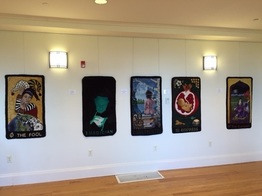 The picture at the left is of some of the rugs in the gallery where the show opened (see the first bullet below). Each rug can be viewed close-up by clicking on the title of the card/rug in the list below. I hope you enjoy the show.
UPCOMING DATES/LOCATIONS:
October-November, 2017 River House Rugs Petit Riviere, Nova Scotia, Canada (with Michele) April-September 2017 The Hooked Rug Museum of North America Hubbards, Nova Scotia February 1- February 28 2017 The Barron Arts Center Woodbridge Township, New Jersey October 29-November 30, 2016 The Athens Cultural Center Athens, New York October 19-23 2016 Green Mountain Guild Rug Show Essex Junction, Vermont September 1-24 2016 Dorchester Center for the Arts Cambridge, Maryland August 15-20 2016 Rug Hooking Week at Sauder Village Archbold, Ohio ...that's it so far. More dates/locations to be added! Don't forget, you can always bring the rugs to your city. Click the FAQ to find out how (scroll to the bottom of that post to see the FAQ). NOTE: Skip to the bottom of this post for answers to basic questions about the show--where to see it, how long it will be at each venue, how to bring it to your town, and more. To start at the beginning of this series of posts, go HERE. This is the sixth the series on the Tarot Rug Project. Here is the classic RWS image of The Empress: And here is Loretta Scena’s tarot rug interpretation of the card The Empress: “You can’t use up creativity. The more you use, the more you have.” --Maya Angelou Loretta Scena is half of the duo of creators and organizers of the Tarot Rug Project. As I recall, she and Michele Micarelli, her co-creator/organizer, came up with the idea for a tarot rug series in 2009 on their way back from a rug hooking camp. Loretta is a well-known and highly respected rug hooker/fiber artist, designer, teacher, and bead artist, and lives on Long Island (New York, USA) with her husband Ed and daughter Caitlin. Ed and Cait both spent many hours supporting her vision to make the exhibit happen; it was definitely a family affair. Loretta's website can be found HERE and includes many of her gorgeous rugs; more rugs can be seen on her blog. I met all three at the exhibit opening for the first time and just fell in love with them all. Nearly all the symbols from the original Rider-Waite-Smith card are on Loretta’s tarot rug. The Empress tarot card falls right after the High Priestess in number (High Priestess is #2, the Empress is #3), and here we see that the pomegranate veil behind the High Priestess has been brought into focus as one single pomegranate. This particular fruit is the ultimate symbol of fertility, and is central to Loretta’s interpretation of the Empress. Here, the Empress herself is the infant, about to be born from within a pomegranate womb, and cushioned by the lush seeds/eggs of creativity. And that is what the Empress is all about--endless nurturing, endless creativity. The lushness of the original Rider-Waite-Smith image is all there within that womb, along with the rich and peaceful color of the background. Various symbols of the original card can be found around the rug--the stars from her crown, the wheat, the waterfall, the scepter (with its Venus symbol, to which the Empress is so connected), even the pearls at her throat become the tiny pearl bracelet on the infant Empress. Loretta says, “The baby is the Empress in her infant state, ever growing and reproducing.” The Empress has a very strong connection with nature and with the natural world. WHAT DOES THE CARD MEAN? In a short post I can only offer surface meanings of these deeply-layered symbols. But The Empress is all about love, nurturing, and fertility (creativity in the physical, and also creativity of ideas). In the original card she is pregnant, and that pregnancy symbolizes all the fruitfulness and possibilities of our world. “At the touch of love, everyone becomes a poet.” --Plato When you get this card, ask yourself:
FREQUENTLY ASKED QUESTIONS ABOUT THE SHOW:
HOW DO I GET A CATALOG?
IF I WANT TO BRING THE SHOW TO MY TOWN, WHAT SHOULD I DO?
WHERE WILL THE SHOW GO NEXT?
NOTE: Skip to the bottom of this post for answers to basic questions about the show--where to see it, how long it will be at each venue, how to bring it to your town, and more. To start at the beginning of this series of posts or to locate other rugs in the show, go HERE. This is the fifth in the series on the Tarot Rug Project. Here is the classic RWS image of The High Priestess: The wordless voice, The whisper in the soul, The sudden knowing-- All arise from Silence. And here is Wanda Kerr’s tarot rug version of the High Priestess: Wanda is a Canadian textile artist who is well-known not only for her original rugs and her tireless teaching of rug hooking, but also for her dyeing skills and her long running column on dyeing wool in Rug Hooking Magazine. She is a master dyer and an endless source of creative ideas in her writing, videos, and with her students. Have a look at her site HERE. She also runs The Welcome Mat, an online rug hooking school that’s jam-packed with information and well worth the subscription. I found her interpretation of this card fascinating. The black and white pillars of the original card are still there in the rug, but presented so differently (black wrought-iron on the left, white birch on the right). The pomegranate veil that is so prominent on the original is now the very subtle veil suspended from the birch…and the Priestess is facing it, whereas in the original she has her back to it. The waters flowing from her blue robes in the original are now the lake in front of her. The moon headdress of the original is now the full moon in the rug. And of course, the fully-clothed Priestess, facing us in the original, is now the unclothed, truth-telling back of the Priestess in the rug. The scroll she holds in the original has become the stack of books she sits upon in the rug. The mirror is a Wanda addition—since to get the full effect of the message of this card, one must look within oneself. Wanda adds her comment: "If people like they could look closely at the wrought iron for crescent moon, scroll, ying and yang and pomegranates, it was a great catch all for symbols!" As usual, I’ll avoid spoiling the artist’s statement she has published in the catalog (you can find out how to get a catalog at the bottom of this post—proceeds go to helping to ship the rugs as the show travels). WHAT DOES THE CARD MEAN? “The intuitive mind is a sacred gift and the rational mind is a faithful servant. We have created a society that honors the servant and has forgotten the gift.” — Albert Einstein “Intuitions are like migratory birds, they come without a map without a reason.” ― Amit Ray, “There are other ways of knowing than just through reason.” ― Gerald Morris Among other things, the High Priestess card is an image of our subconsciousness. As I’ve said in every post, the many layers of symbolism in the cards mean I can only touch on surface levels of meaning here, but the High Priestess is the voice of intuition. She is the voice that can only be heard in Silence, and the normal din of everyday life makes it hard for us to hear her. She’s the voice that speaks when we listen deeply, when we take a moment to be quiet, when we are suddenly given an insight that has an immediate ring of truth. I always find that a genuine intuition is accompanied by a clear, pronounced physical sensation: a felt sense that what I am getting is deeply true. Goose-bumps, or a sensation of utter shock and certainty. Without the physical sensation, I generally don’t trust it. Of course, I will always double-check any intuition if possible (a good idea anyway). When you get this card, ask yourself:
We all have intuition. Yes, we all have it. It’s simply a matter of listening for it. If you don’t trust yours, feel free to rigorously double-check it. As I said, that’s a good idea anyway. But first, you have to allow it to speak. Listen first; then evaluate. Otherwise you'll be warring with yourself, commenting at the very moment you are getting the intuition, "Oh, this is just my imagination." Yes, it IS your imagination, which arises from subconsciousness and is an underrated faculty--imagination may hold substantial truth. Practice with it, and you'll be richly rewarded. FREQUENTLY ASKED QUESTIONS ABOUT THE SHOW:
HOW DO I GET A CATALOG?
IF I WANT TO BRING THE SHOW TO MY TOWN, WHAT SHOULD I DO?
WHERE WILL THE SHOW GO NEXT?
|
ABOUT ME I'm a textile artist (traditional rug hooking, punch needle rug hooking, and other textile arts), a long-time meditator, a certified meditation teacher and coach, and focused on learning about the interplay of art, creativity, and mindfulness every day. Certified Unified Mindfulness Coach
Categories
All
Archives
July 2024
|
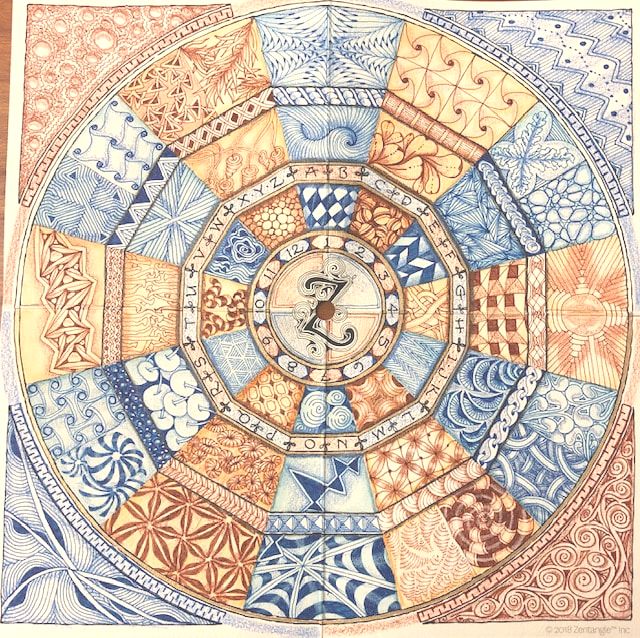

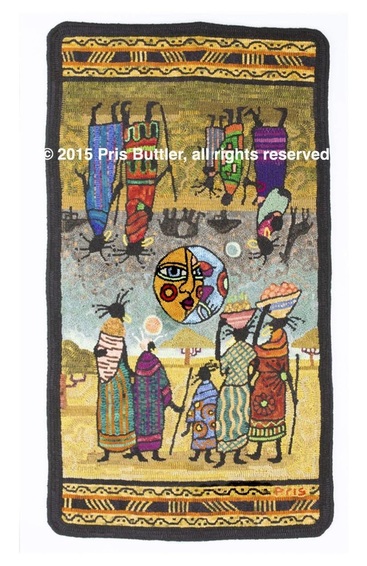
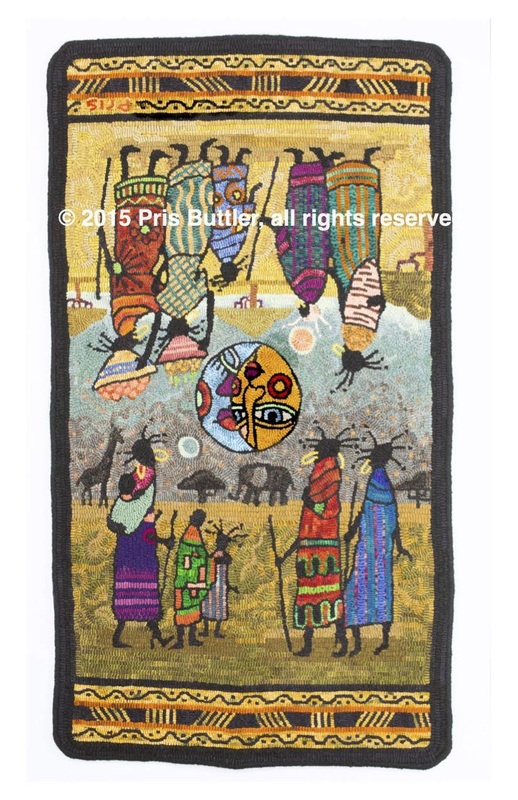
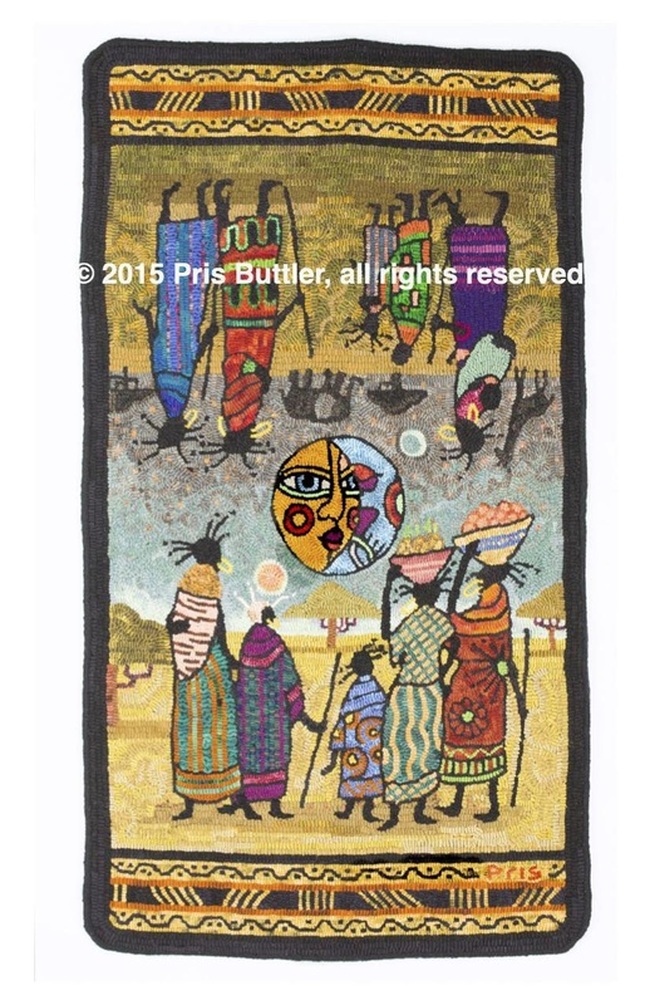
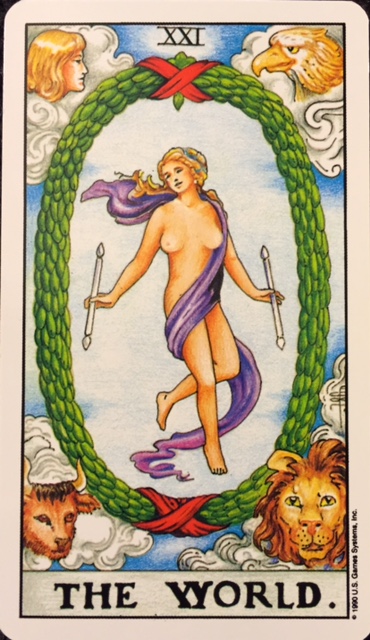
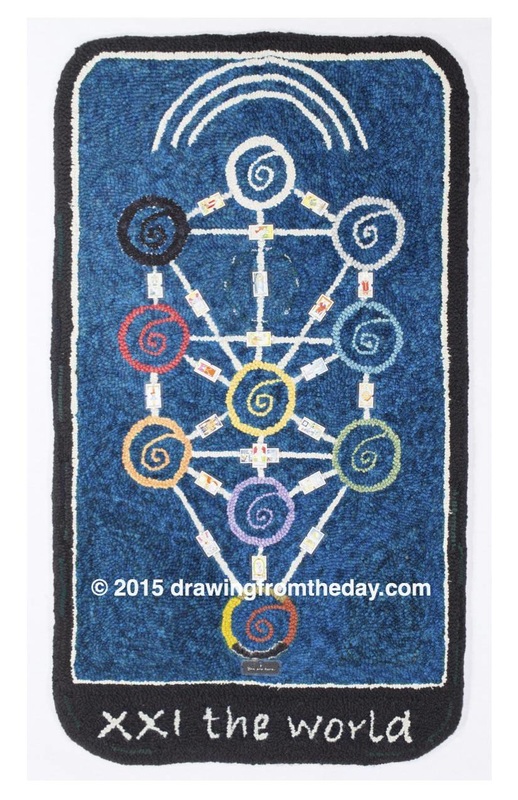
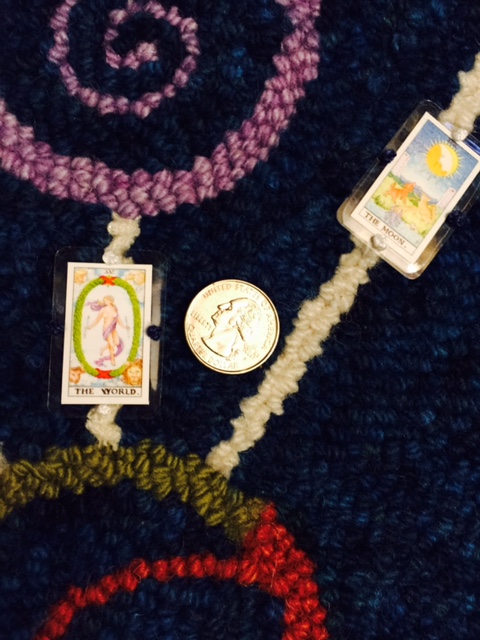
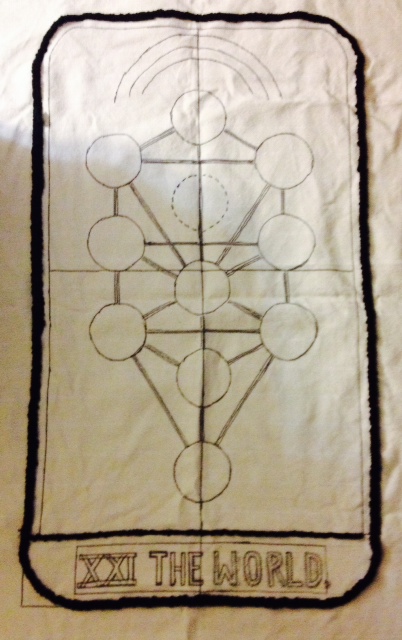
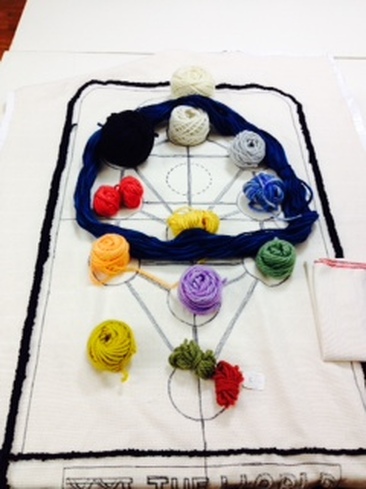
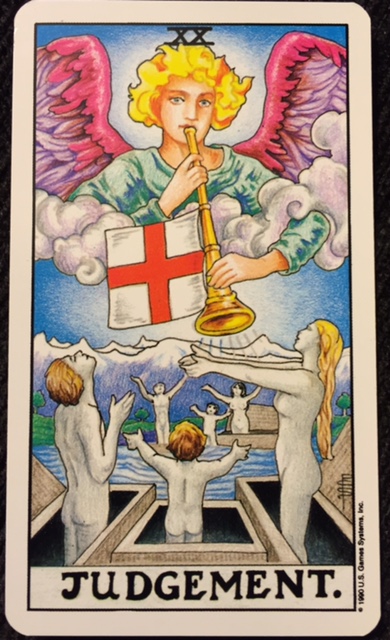
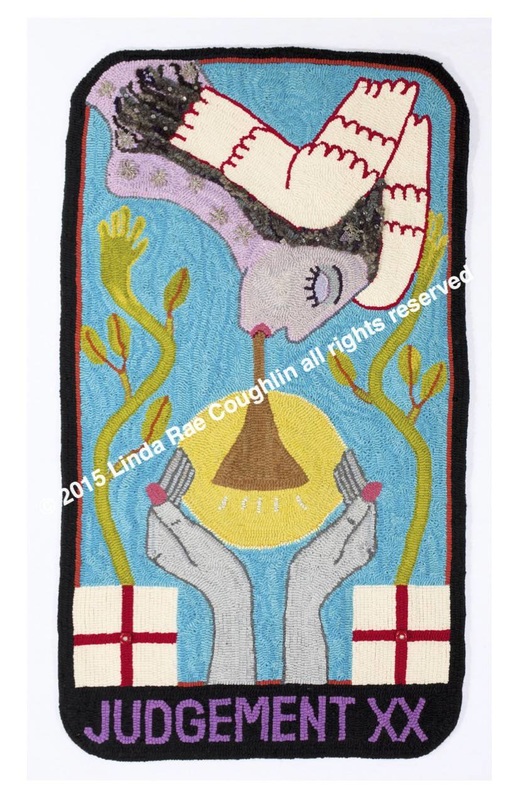
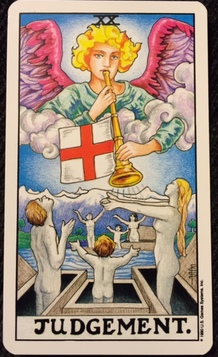
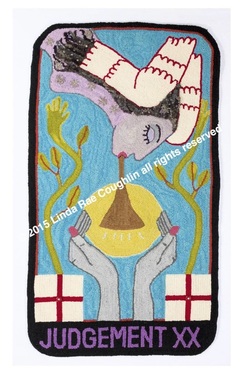
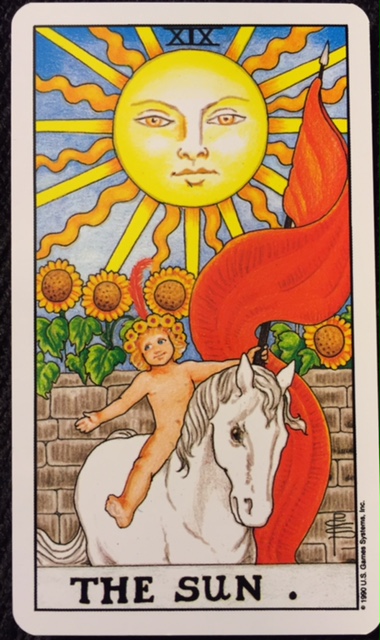
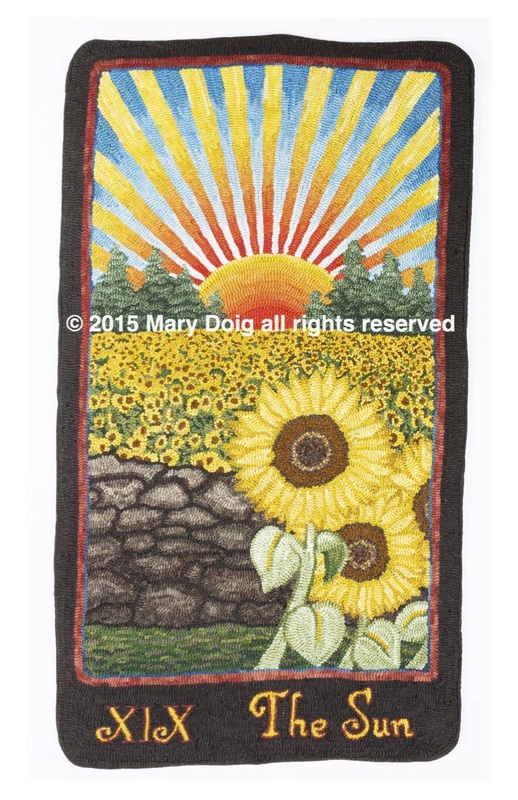
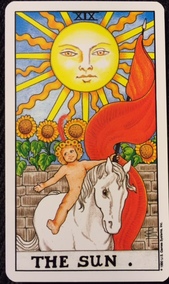
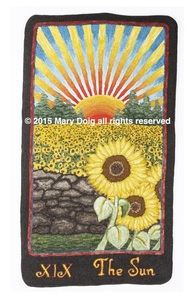
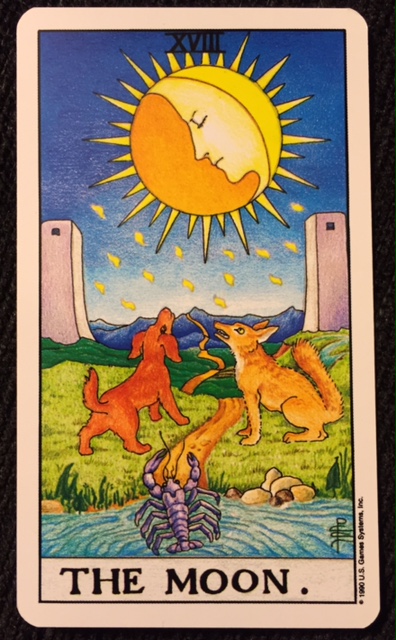
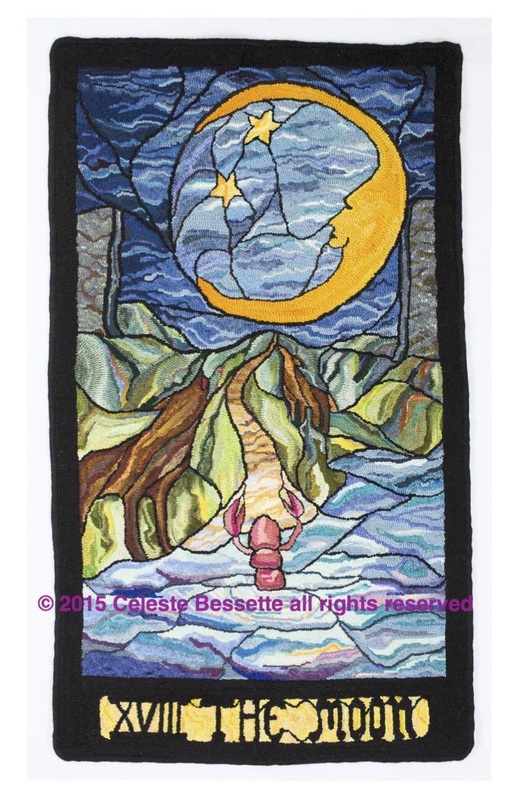
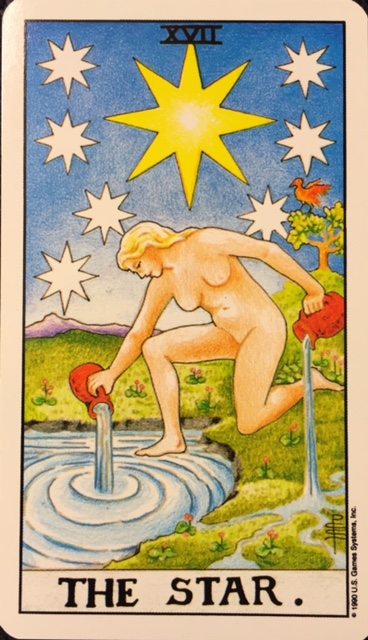
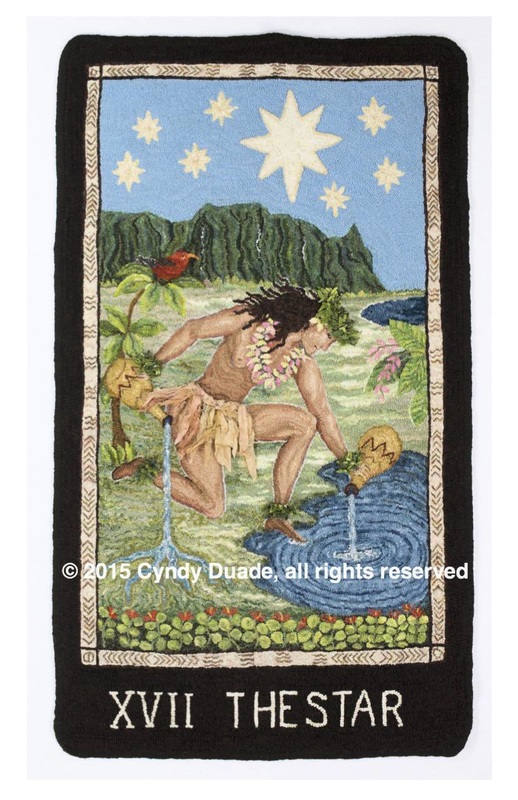
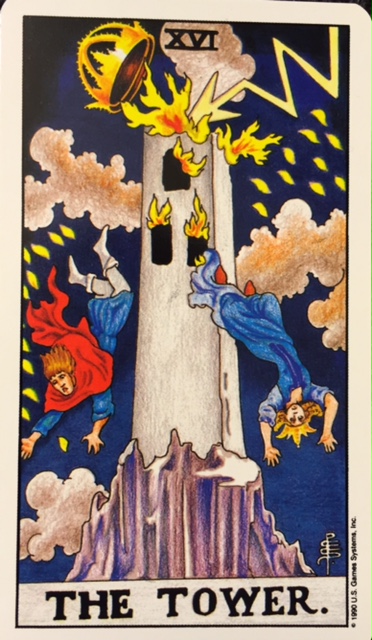
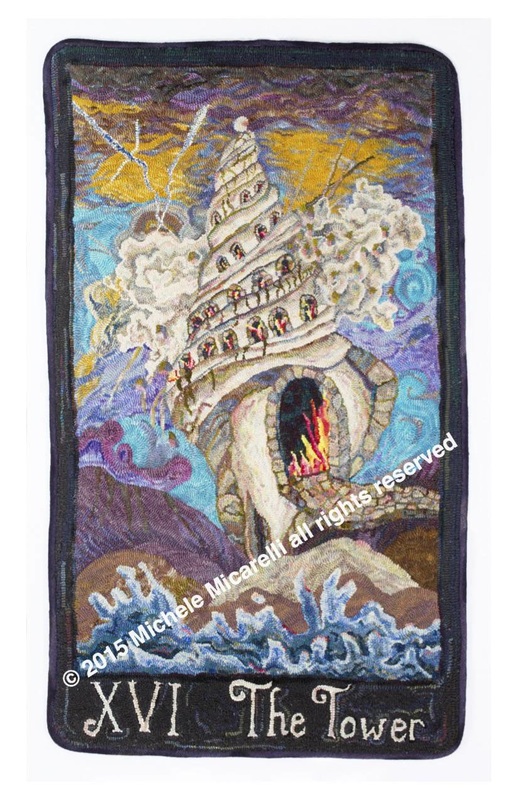
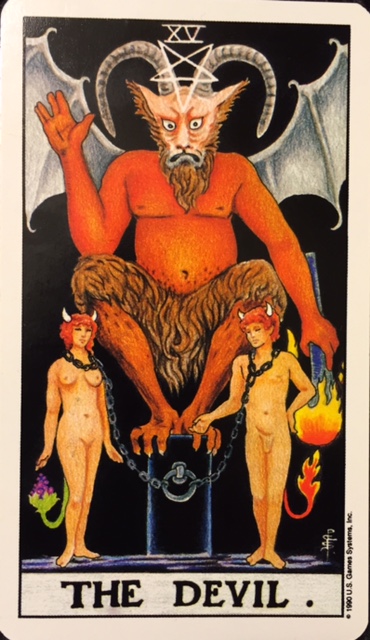
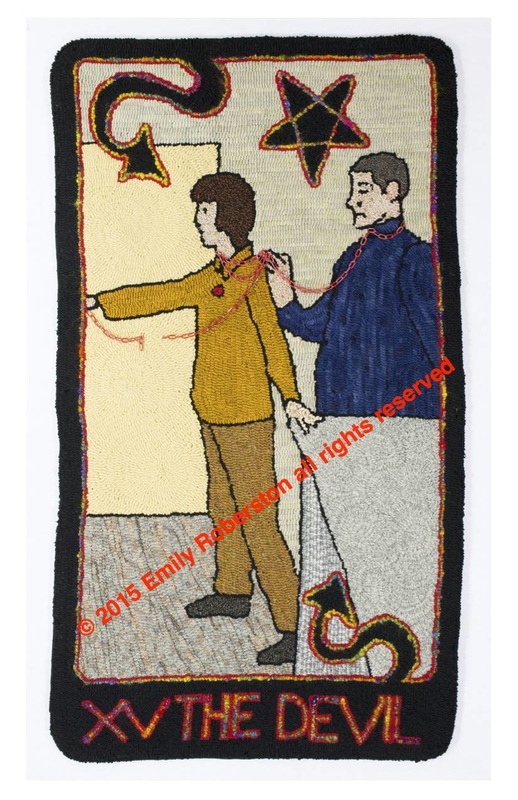
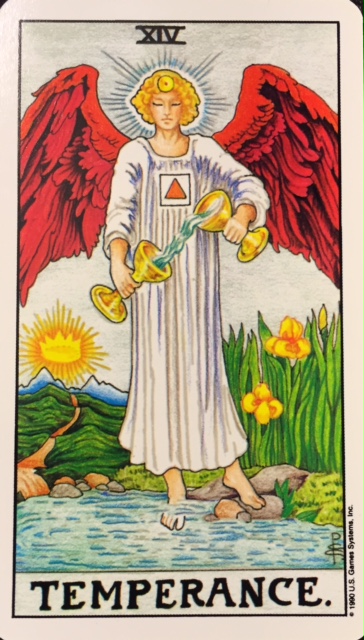
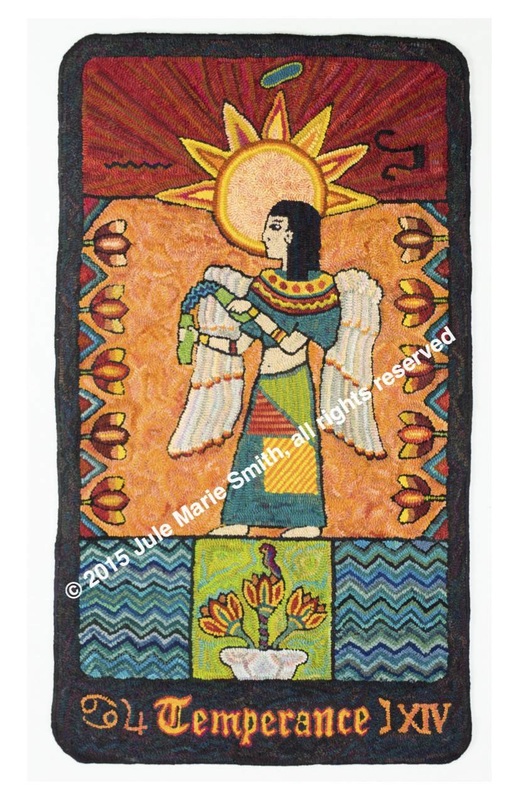
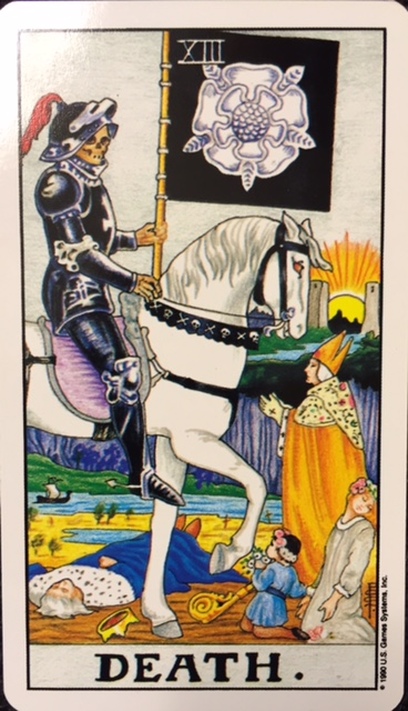
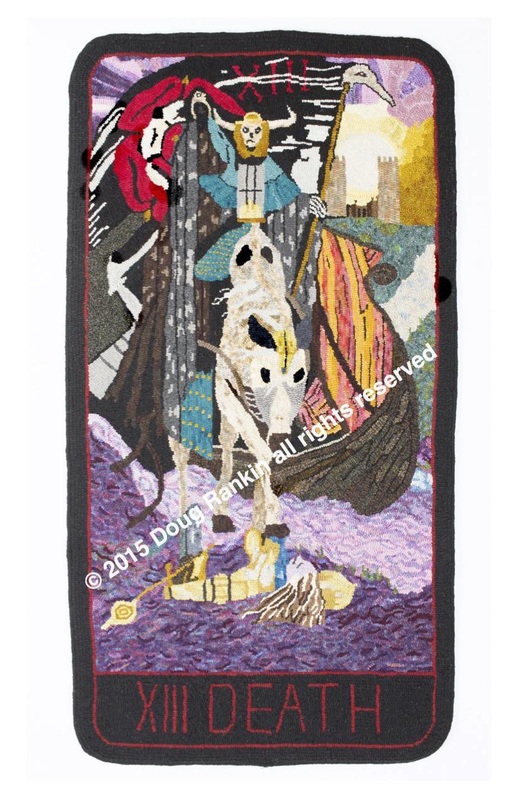
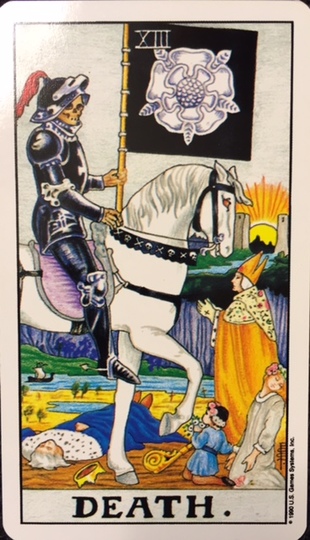
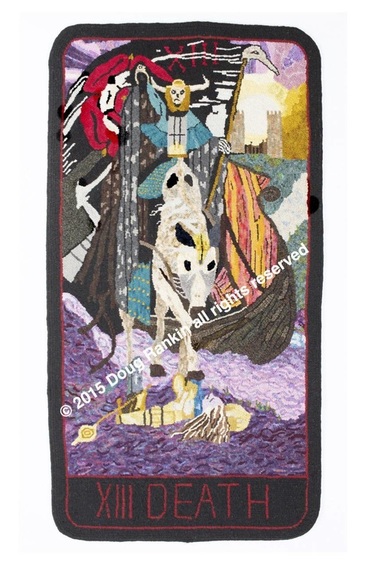
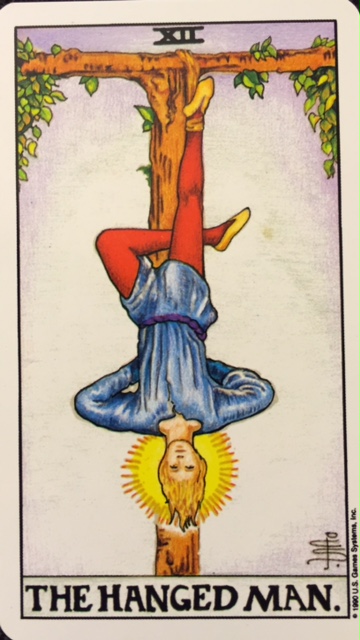
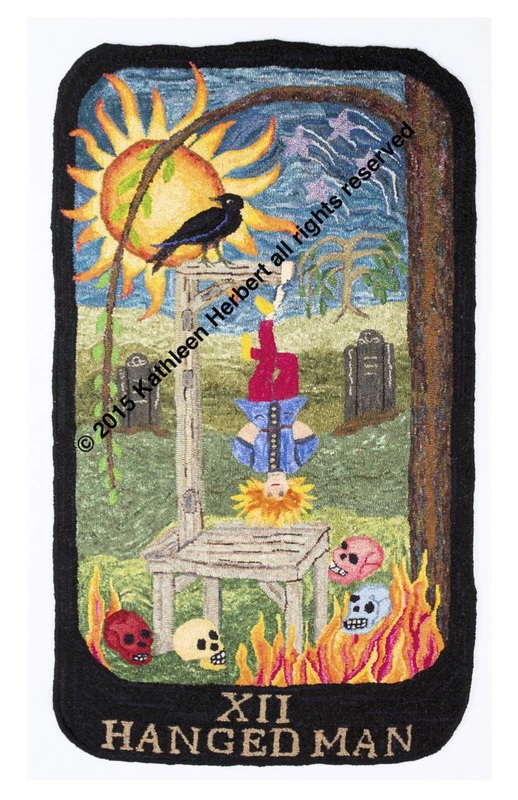
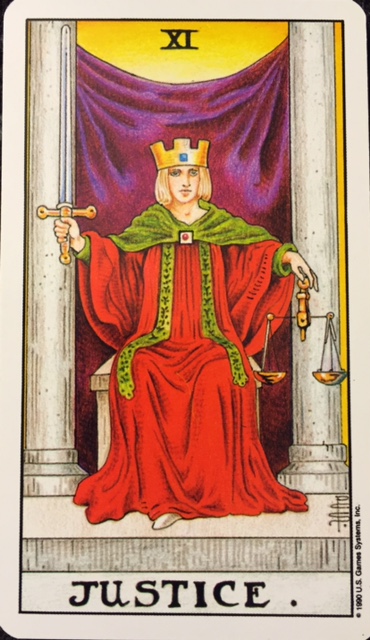
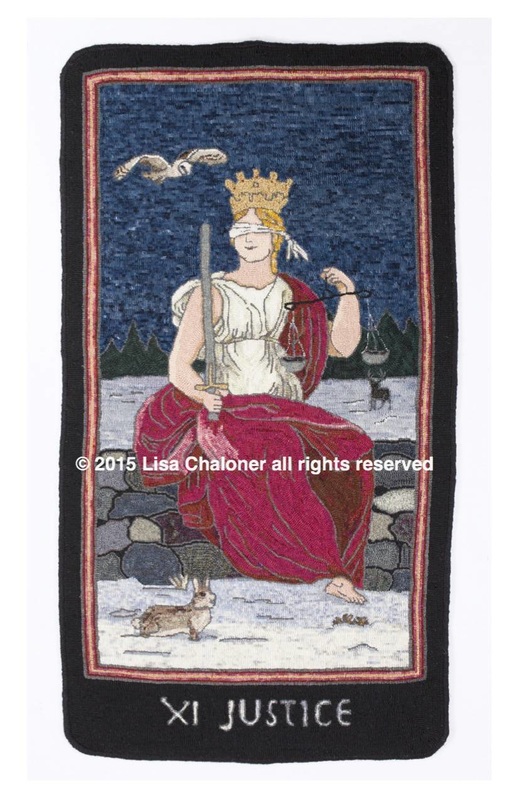
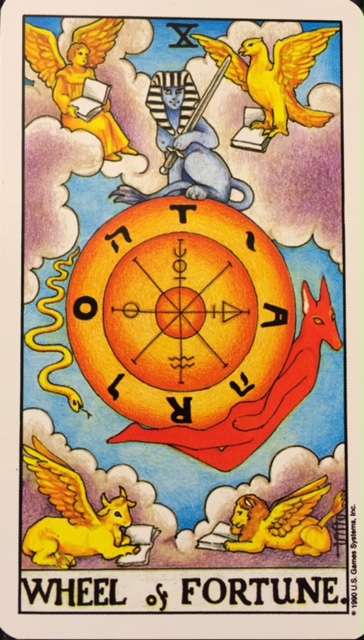
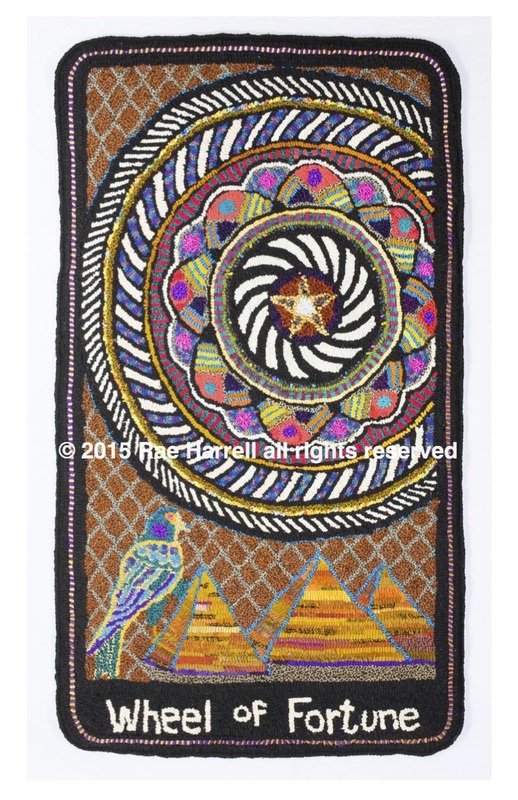
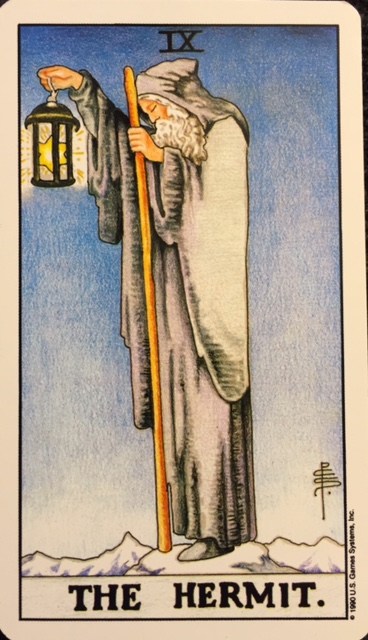
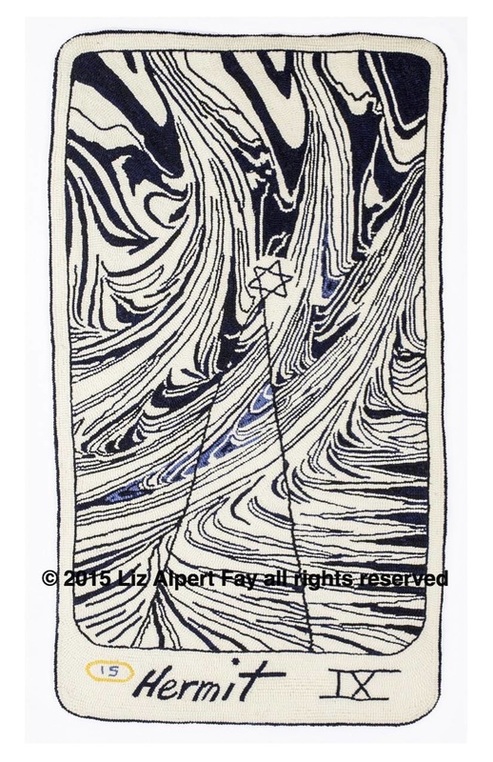
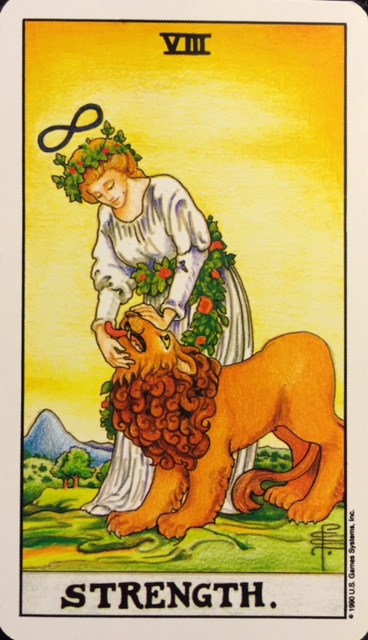
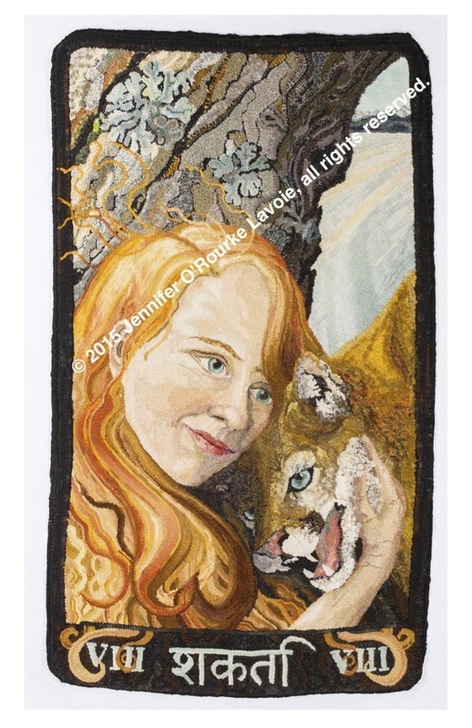
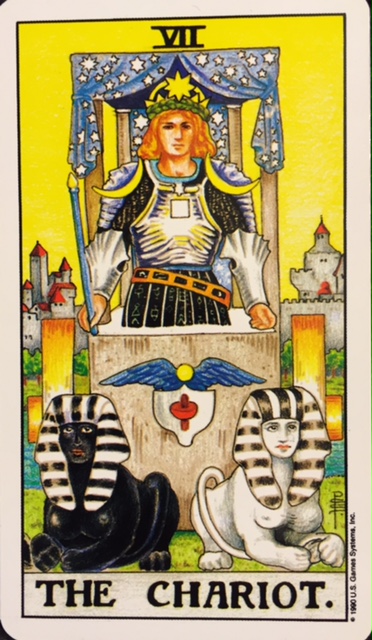
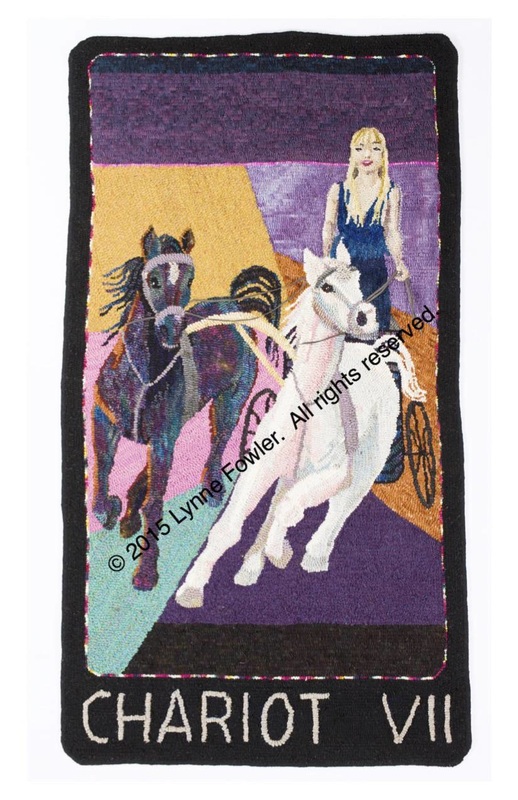
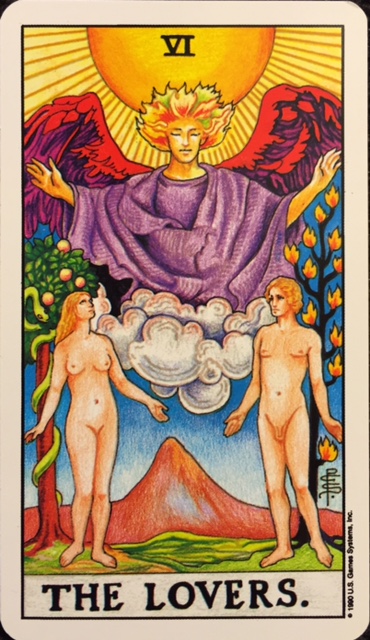
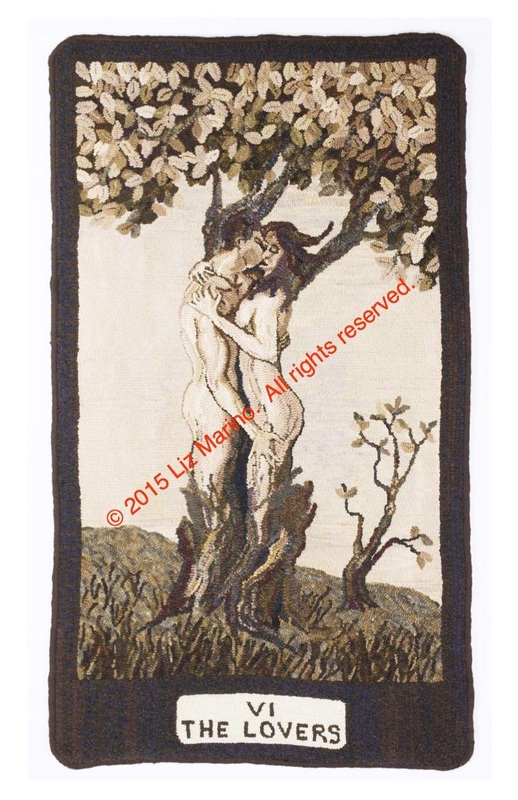
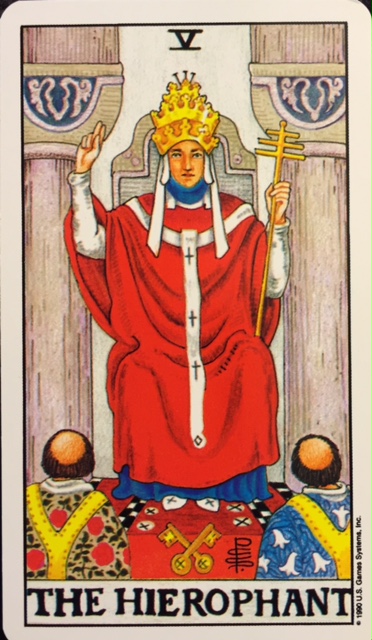
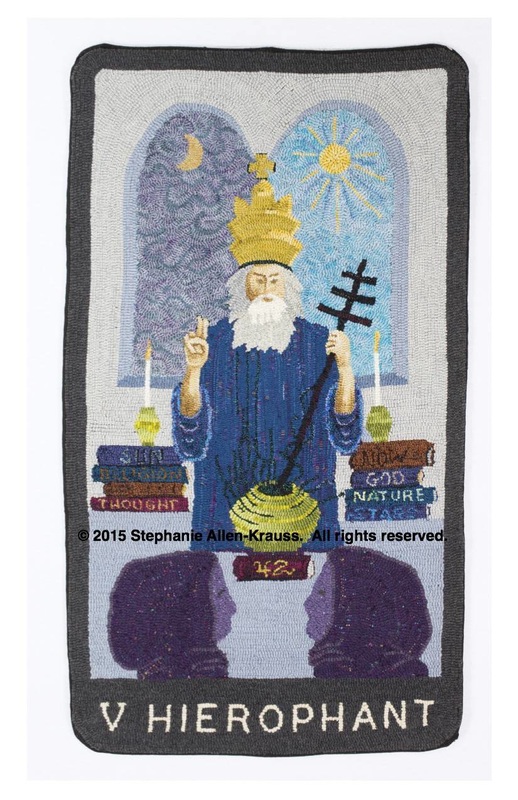
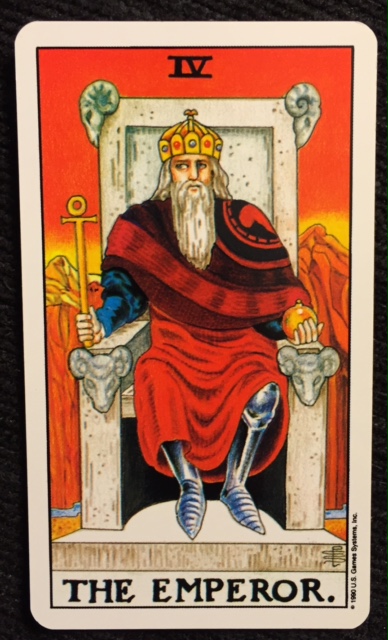
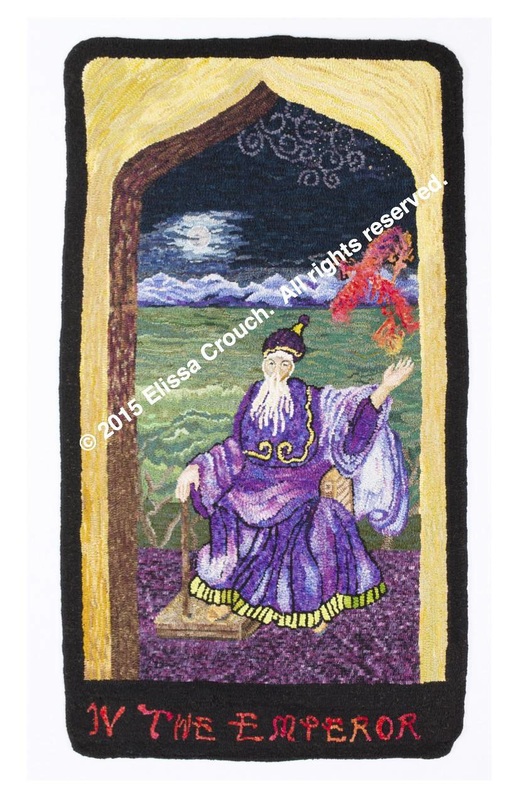
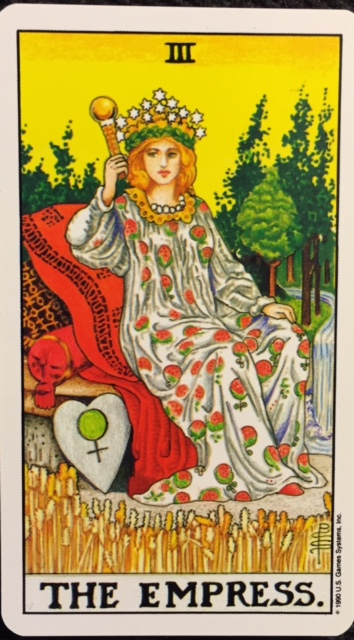
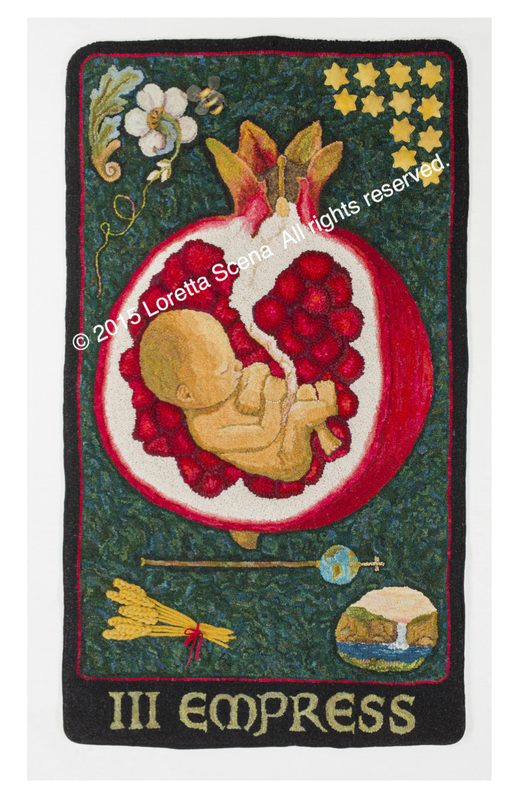
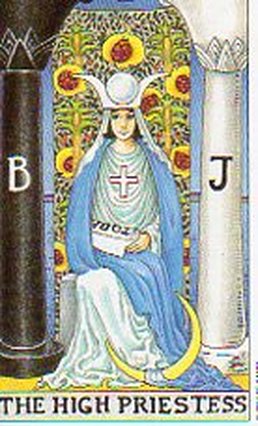
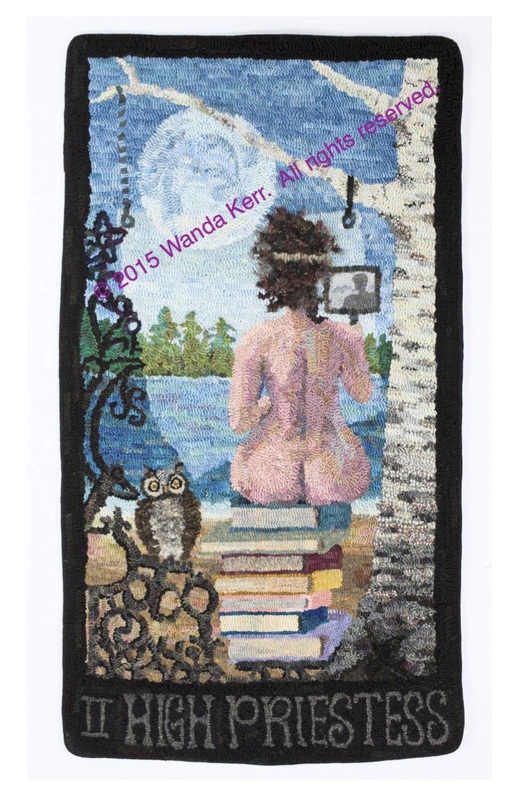




 RSS Feed
RSS Feed
